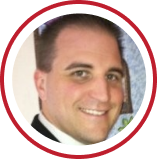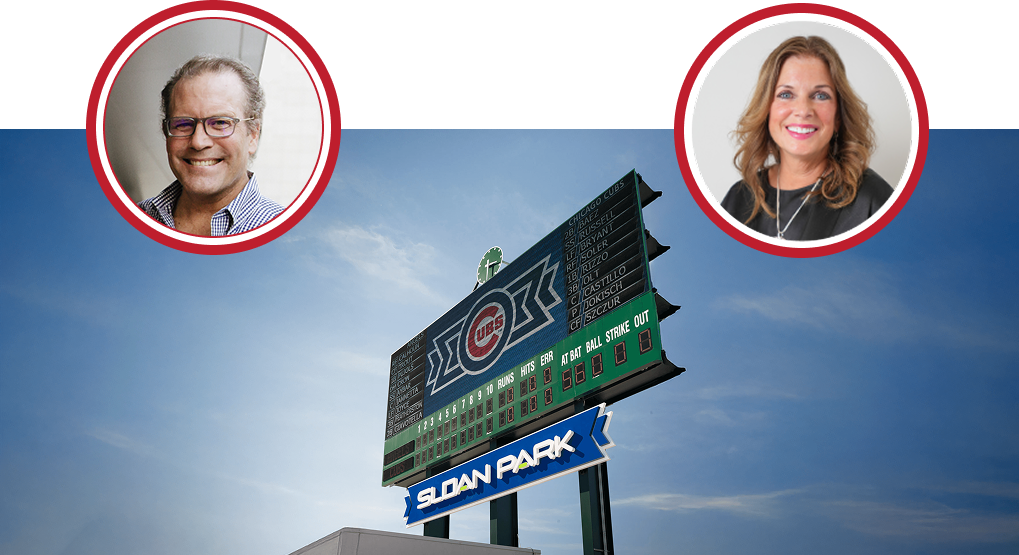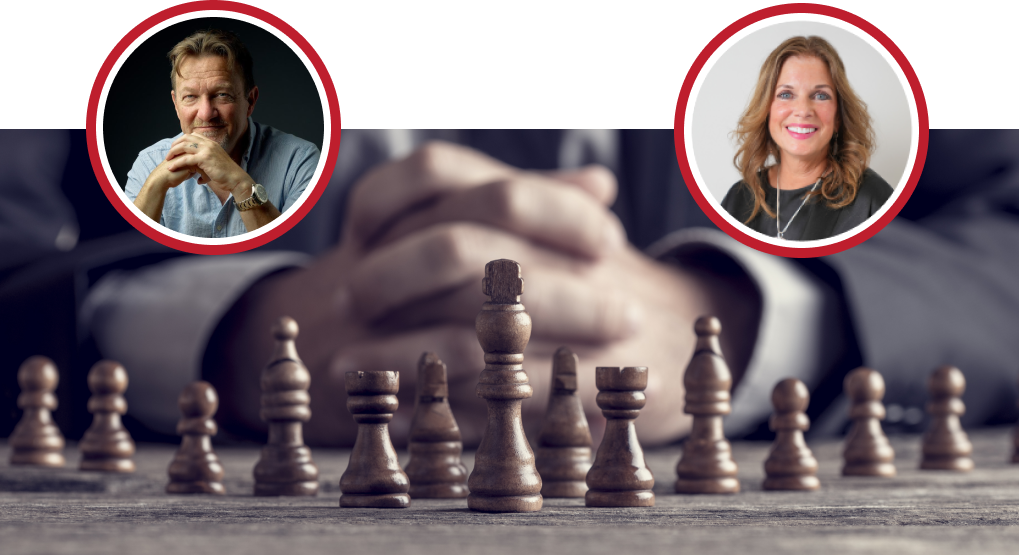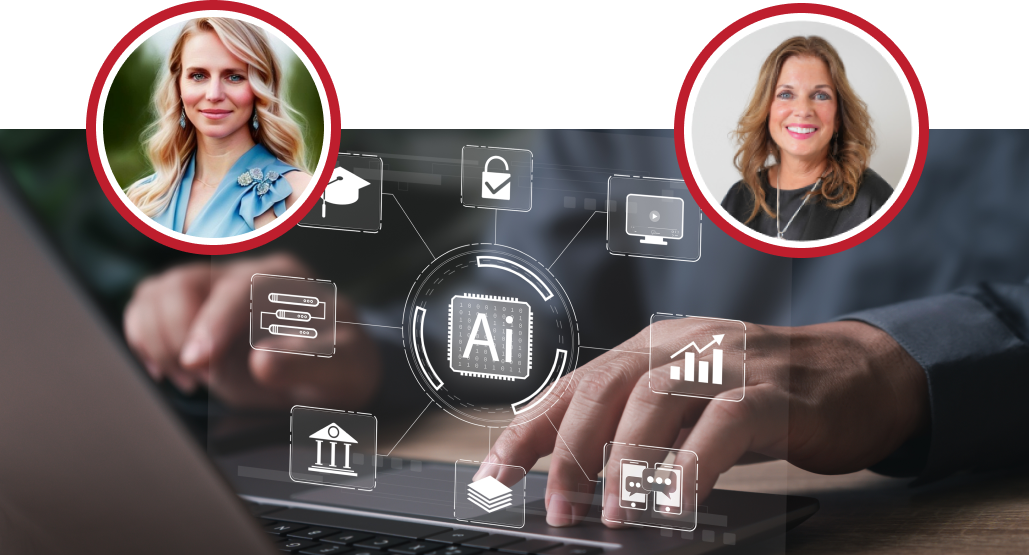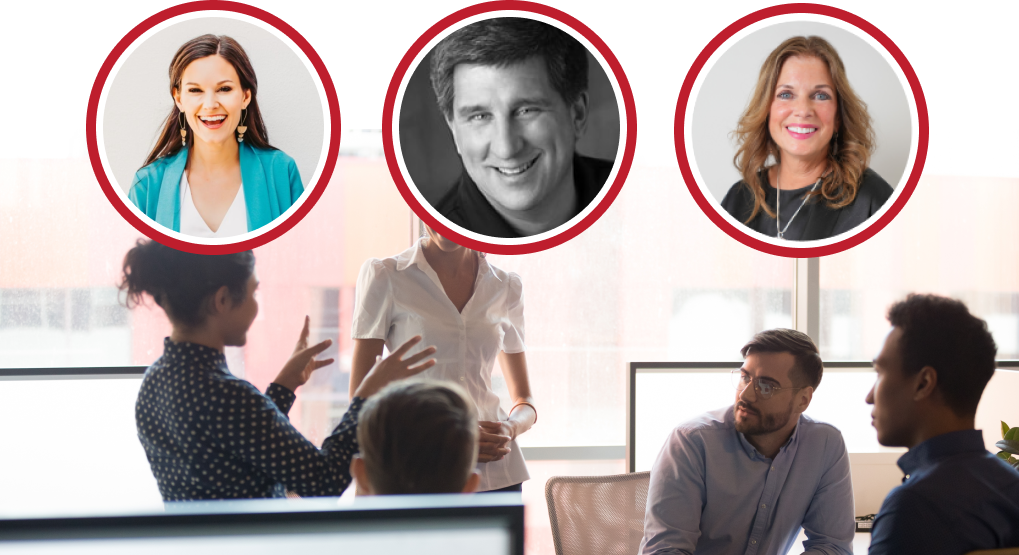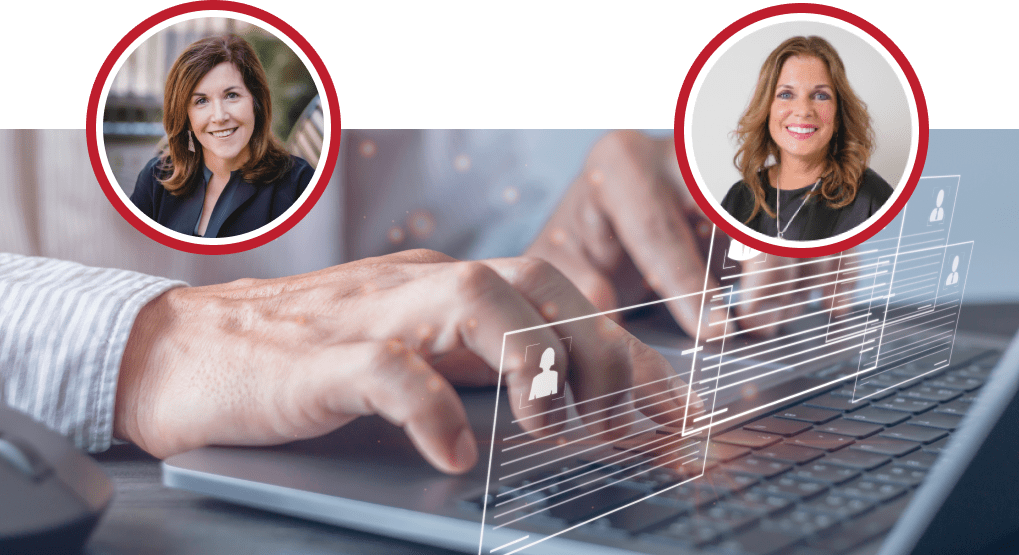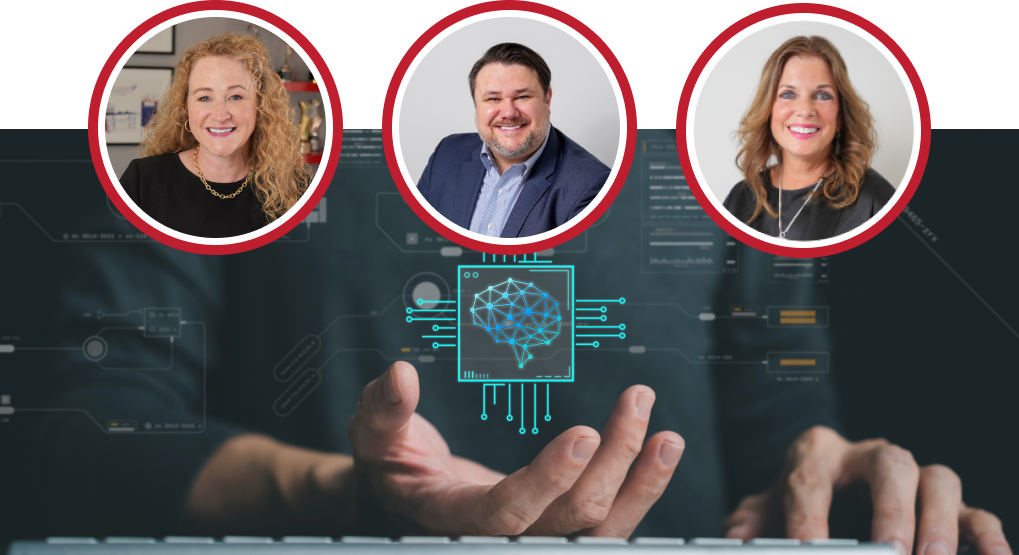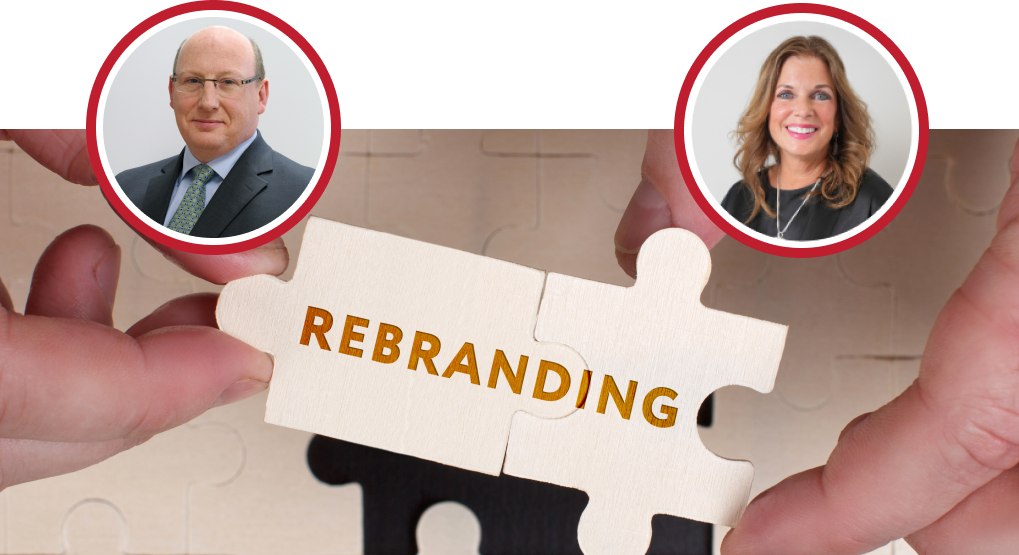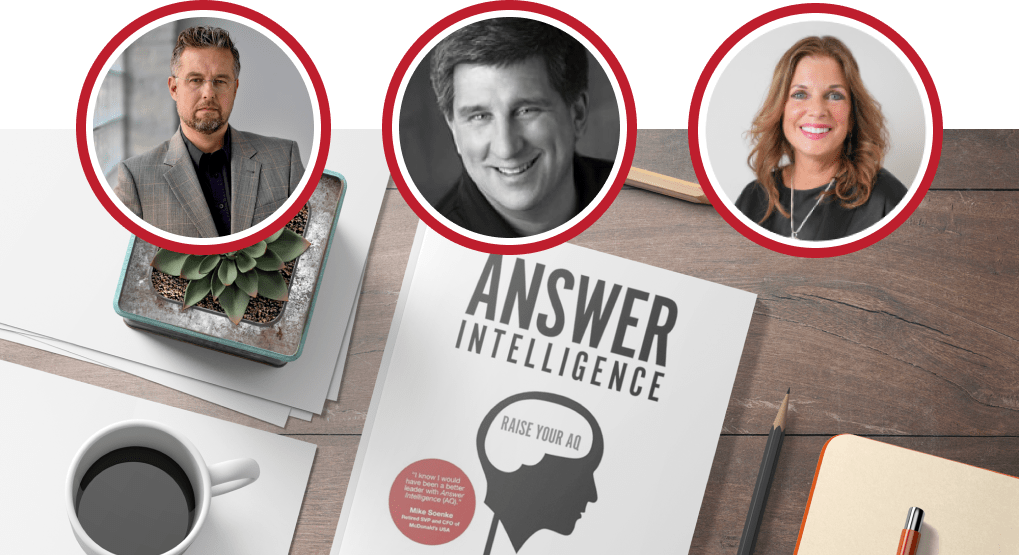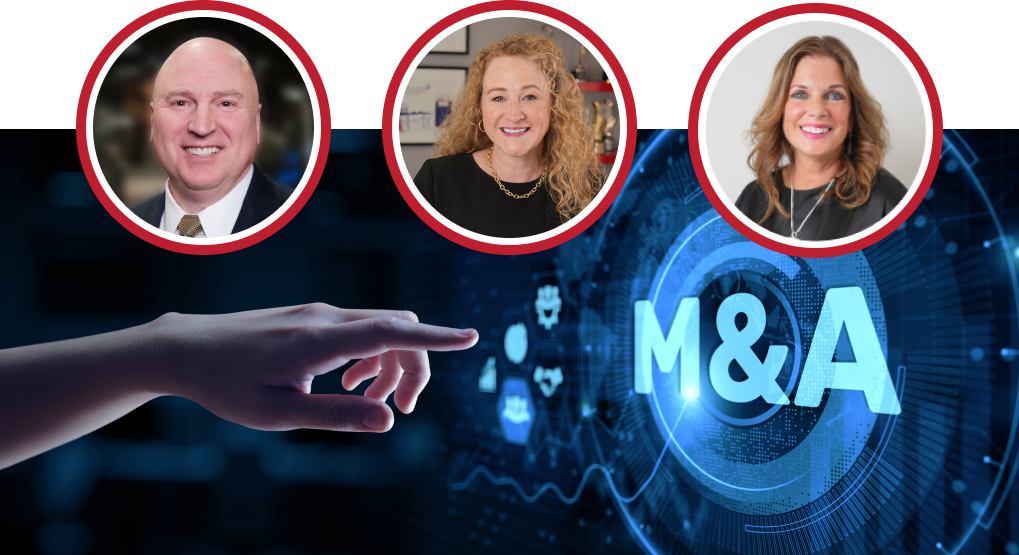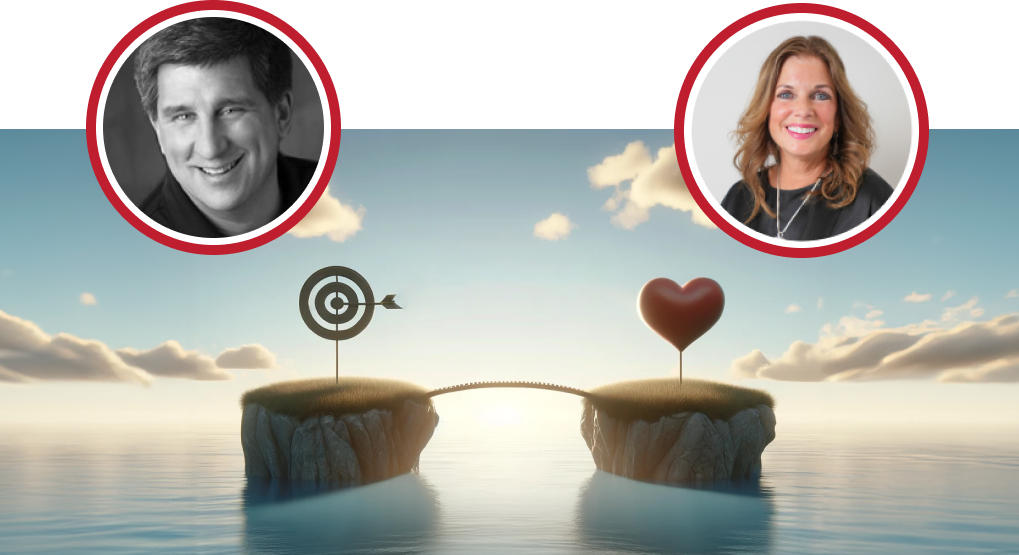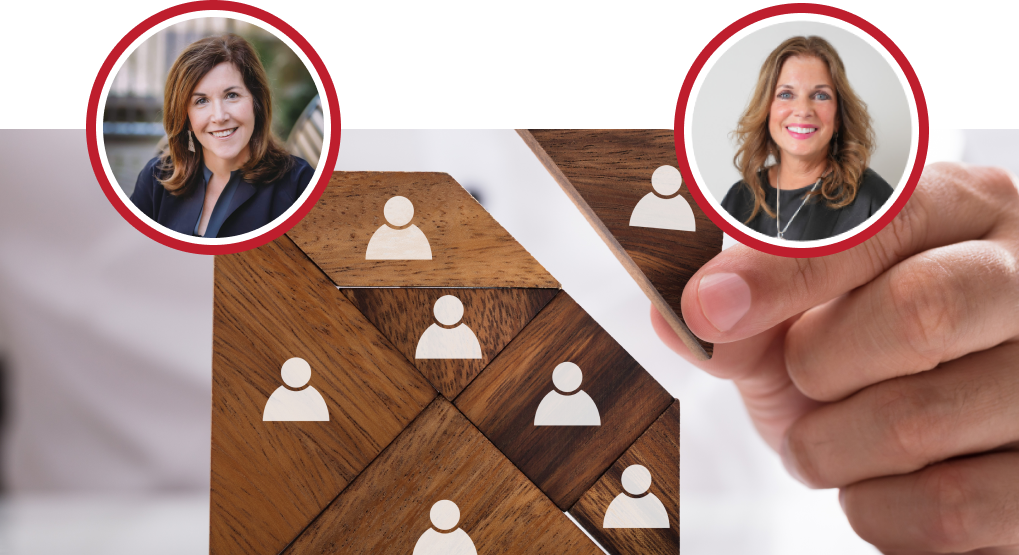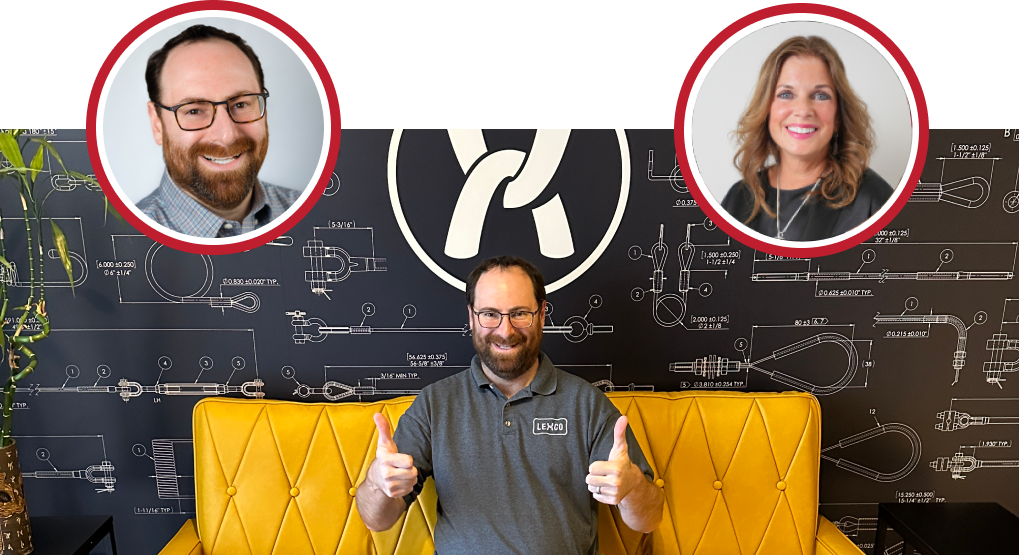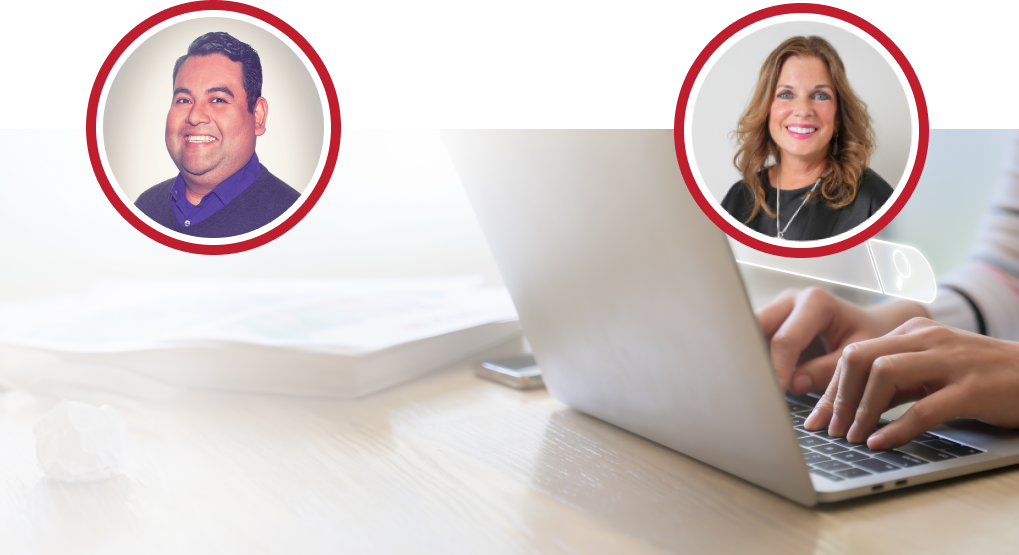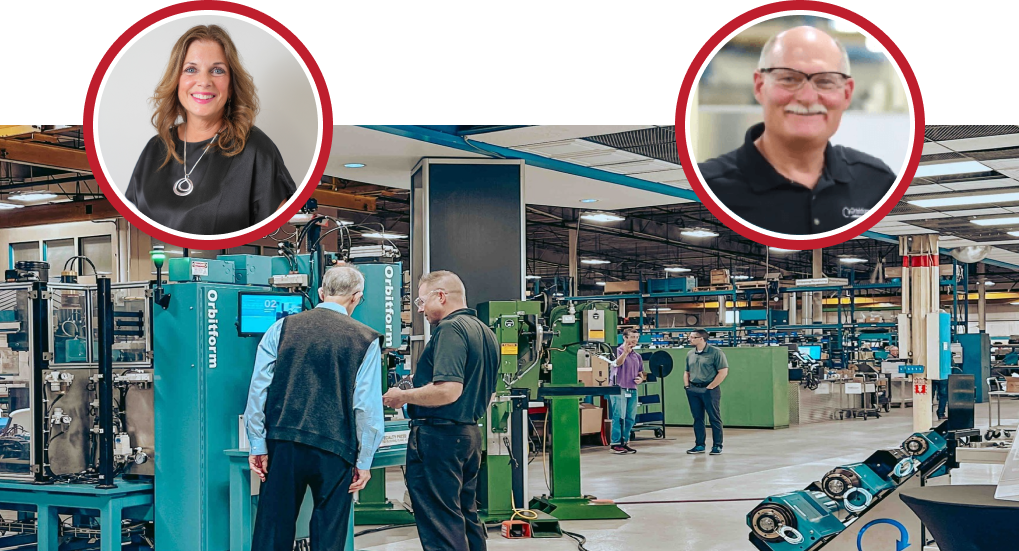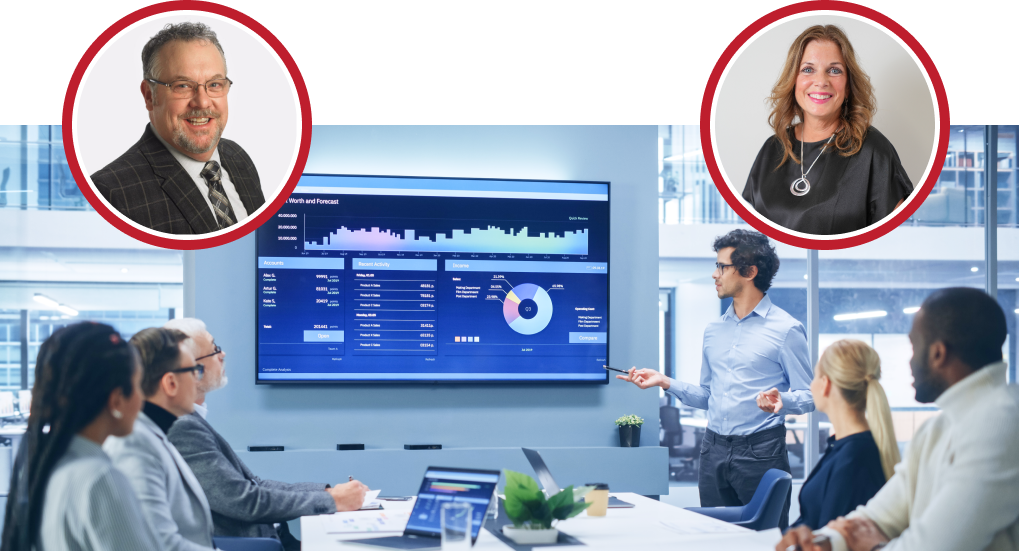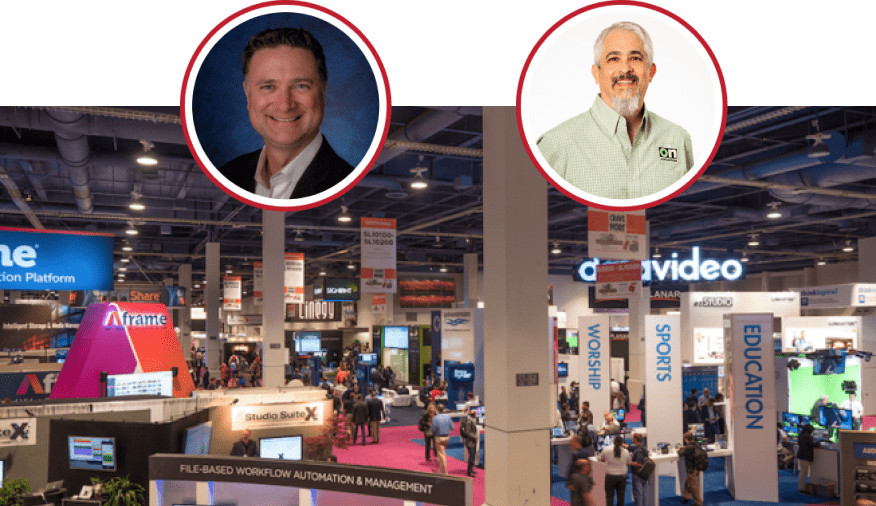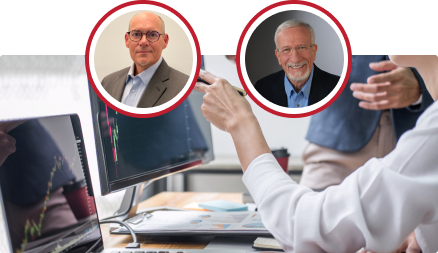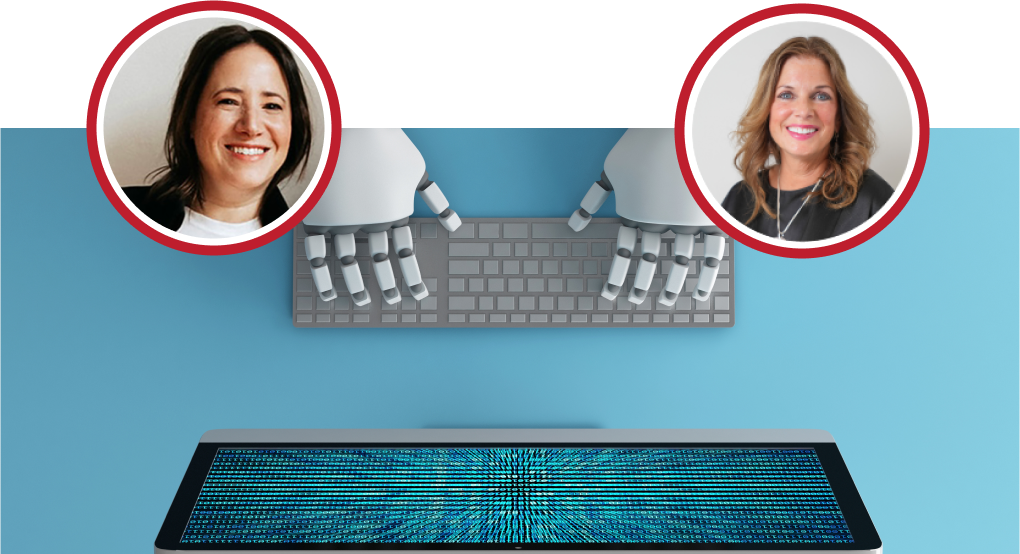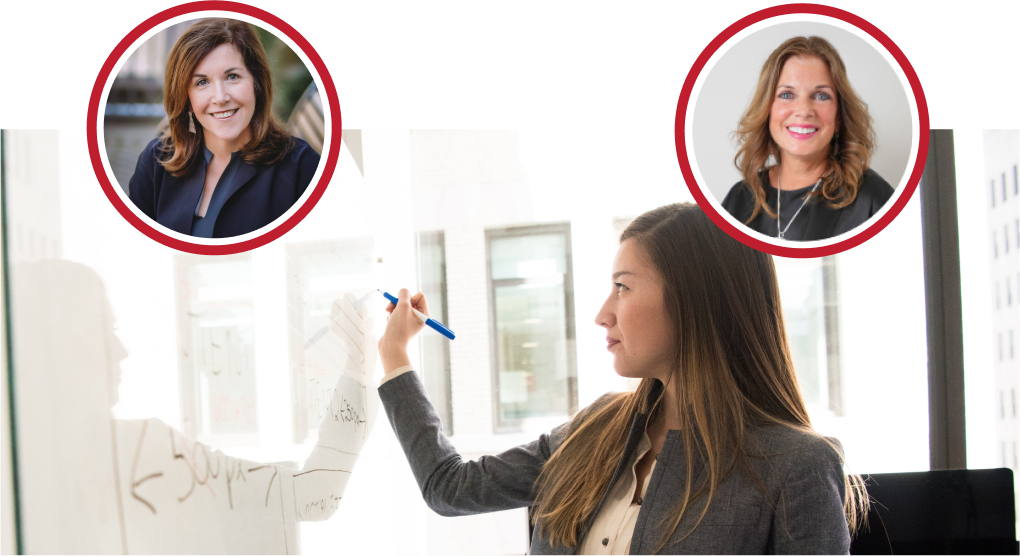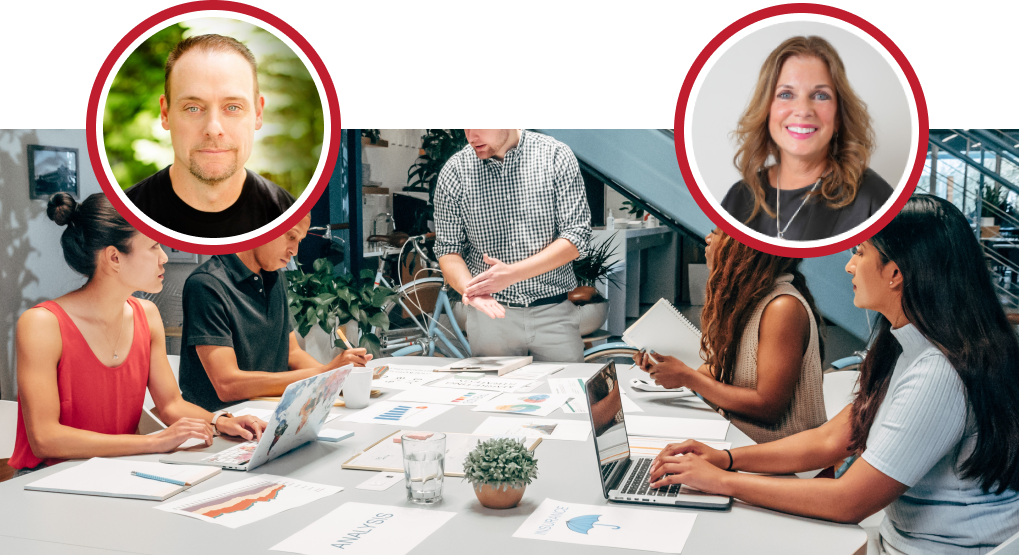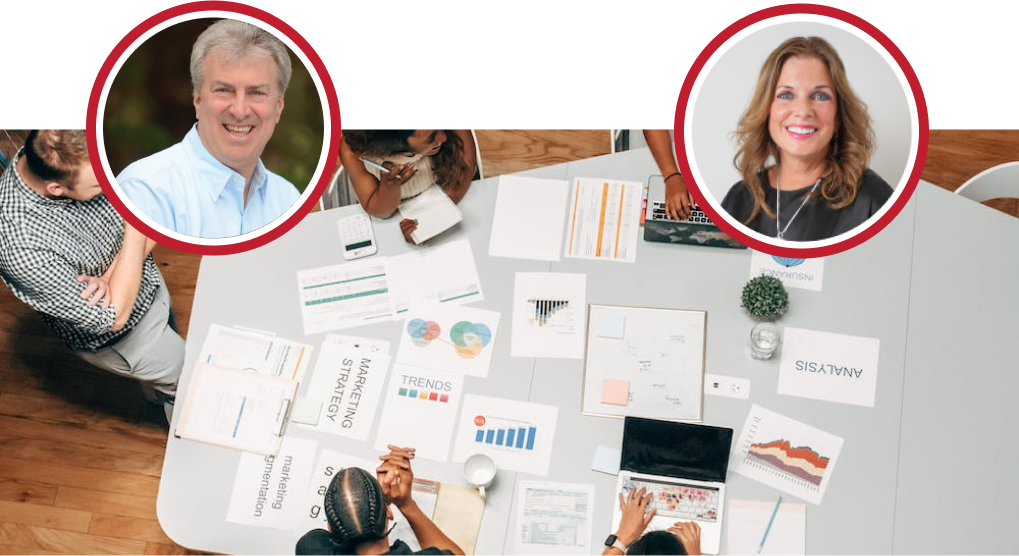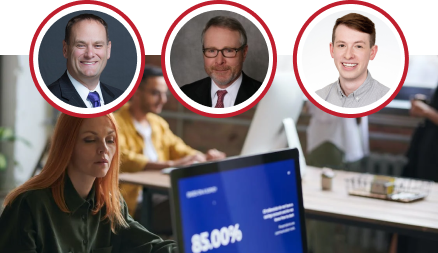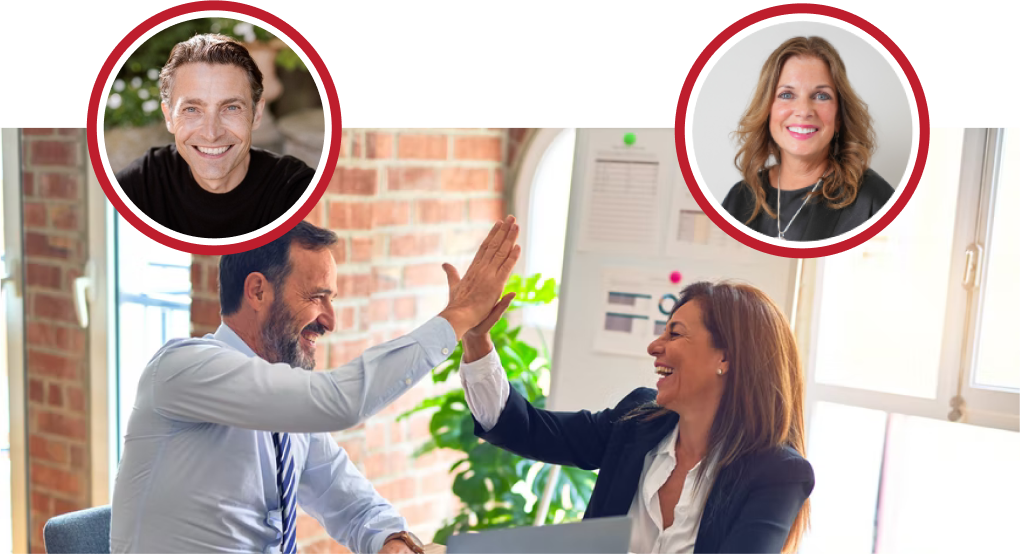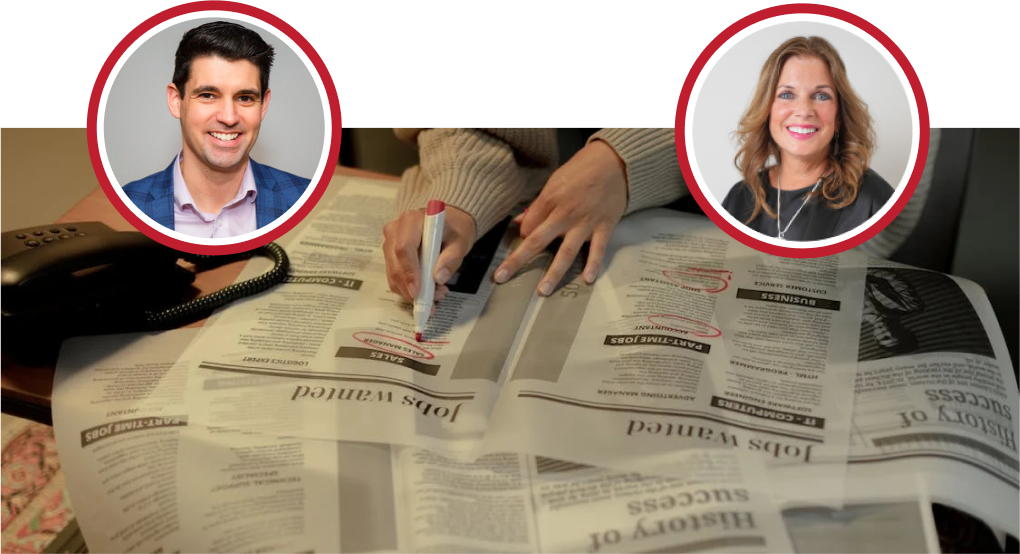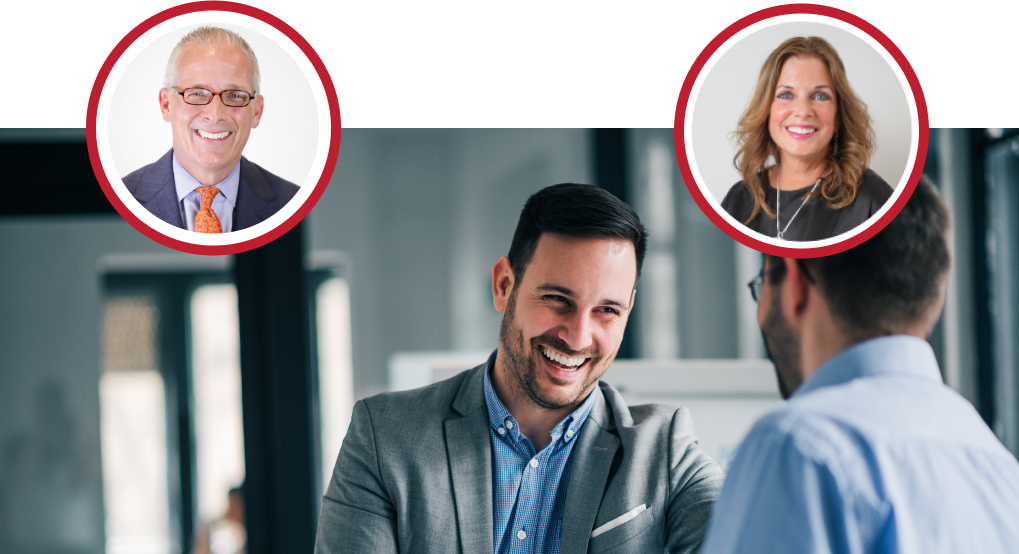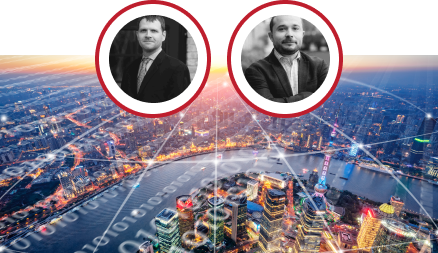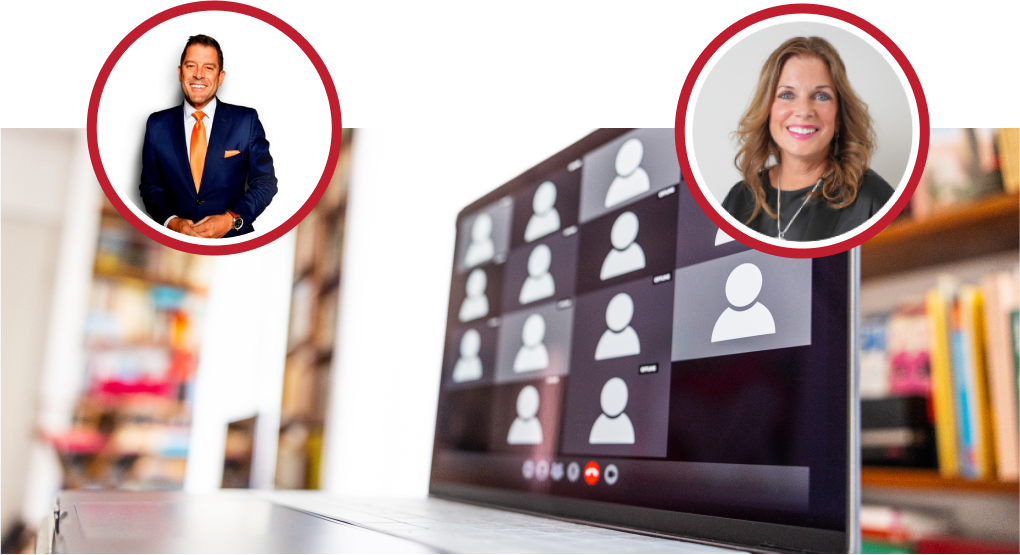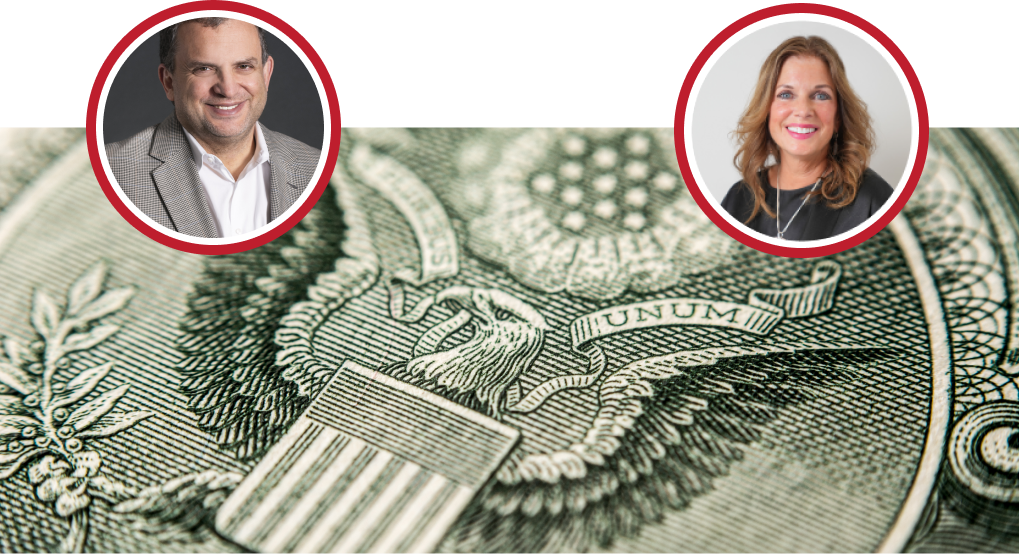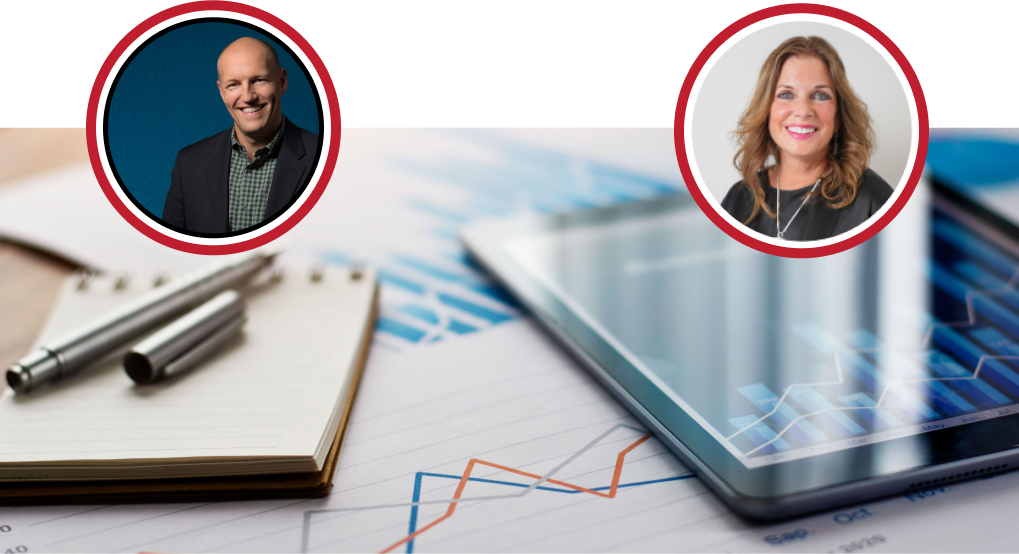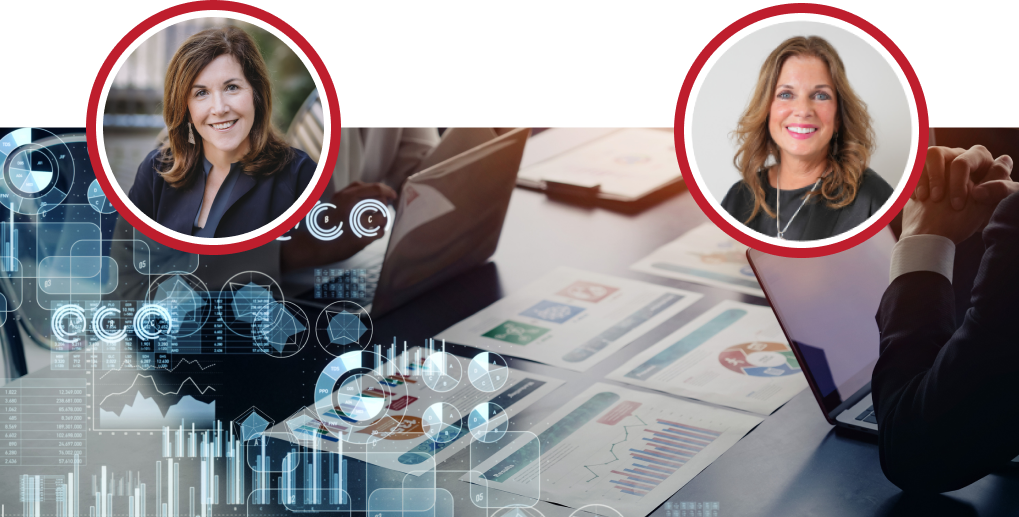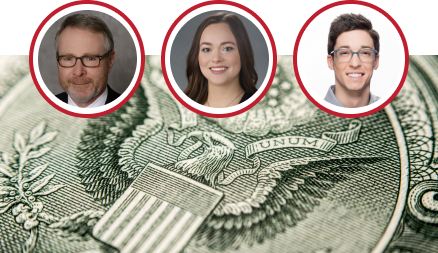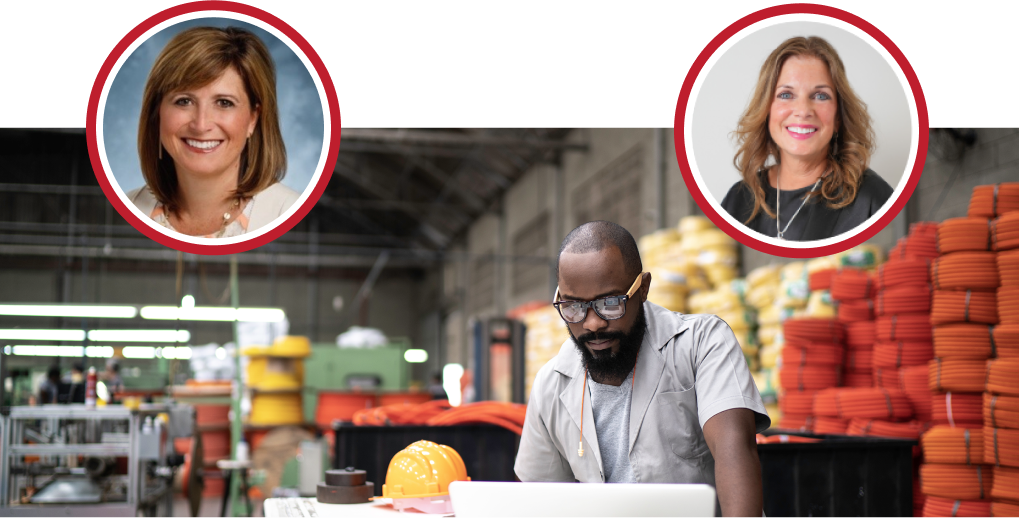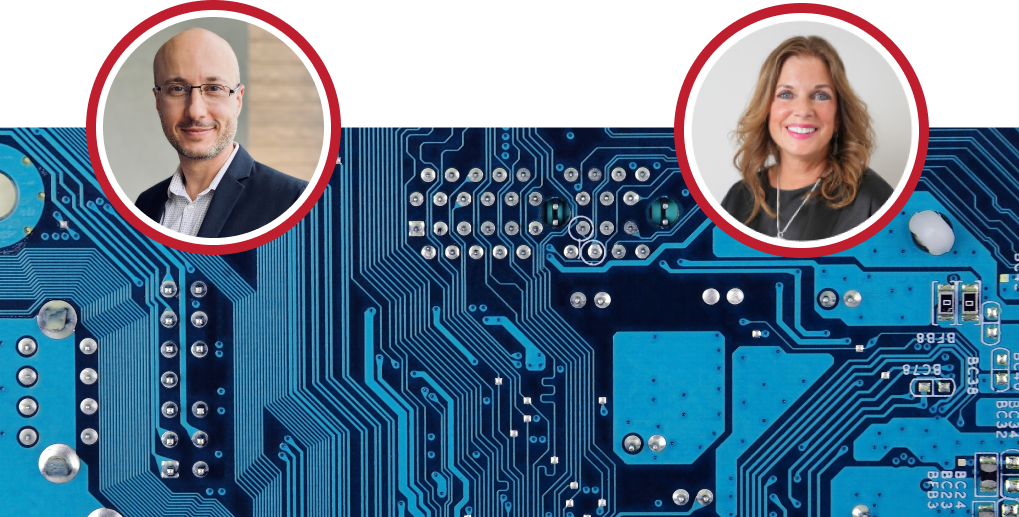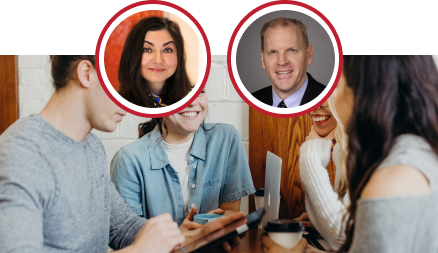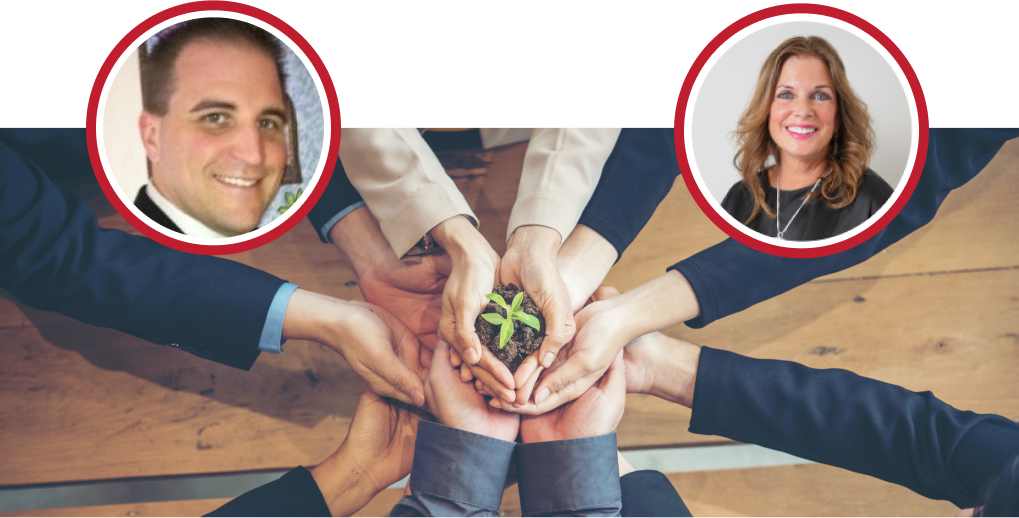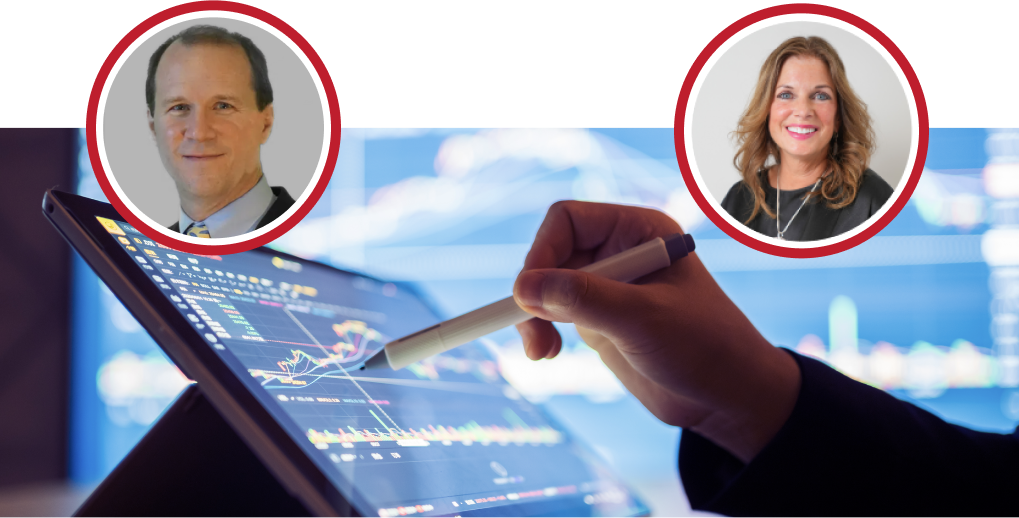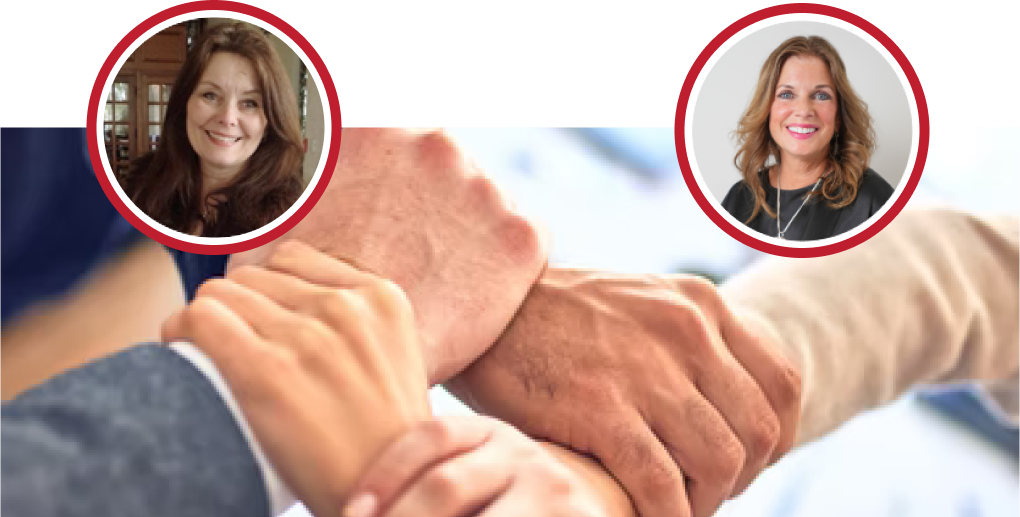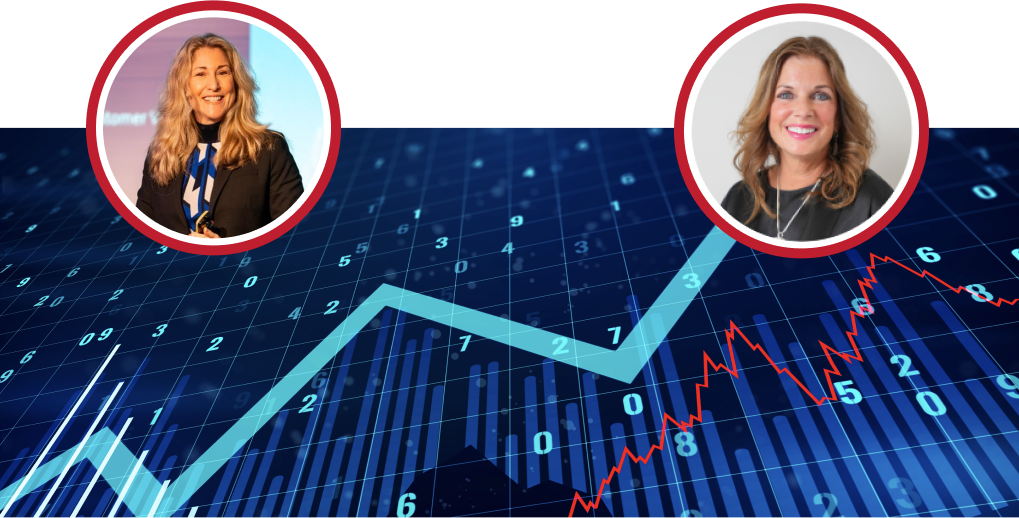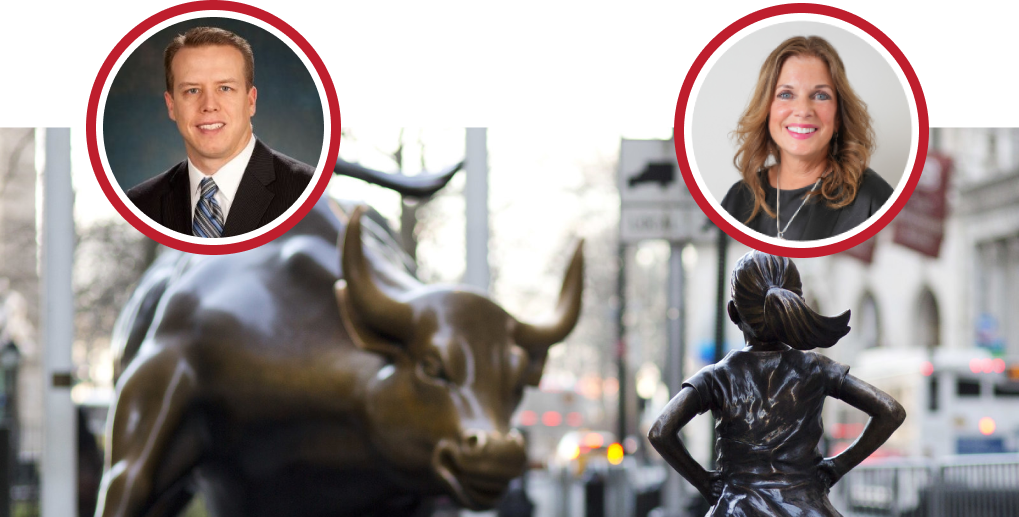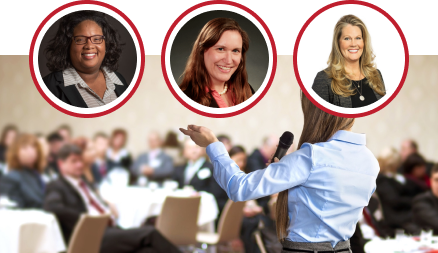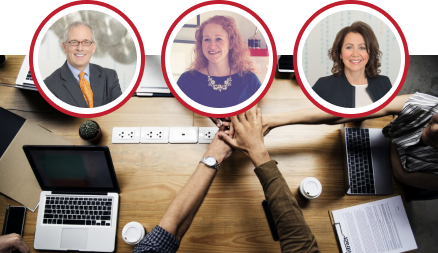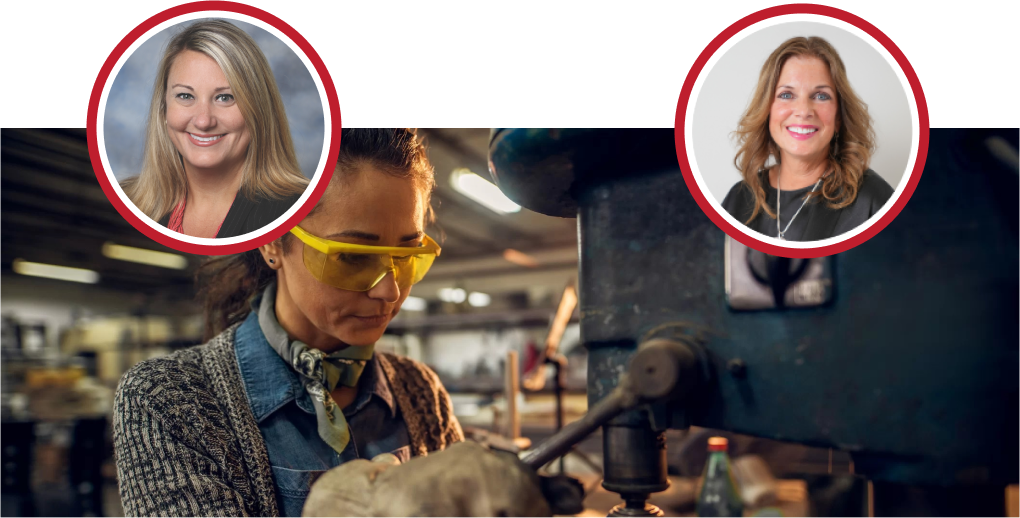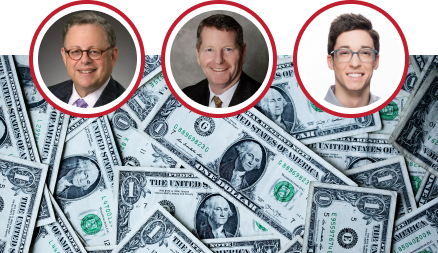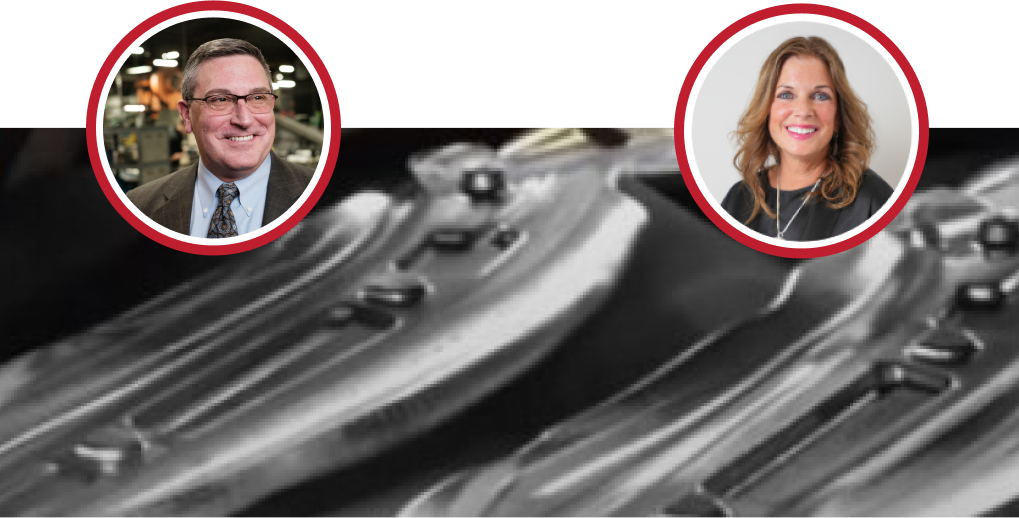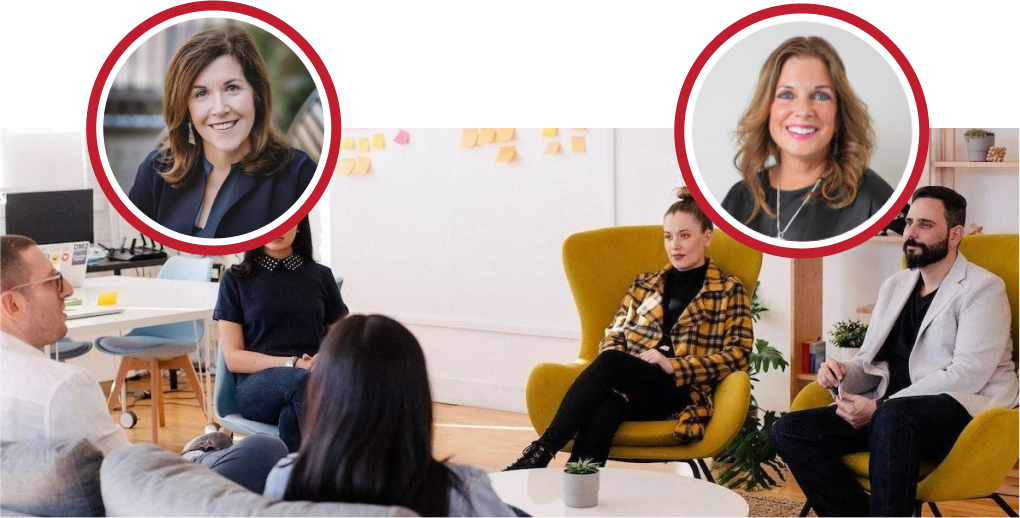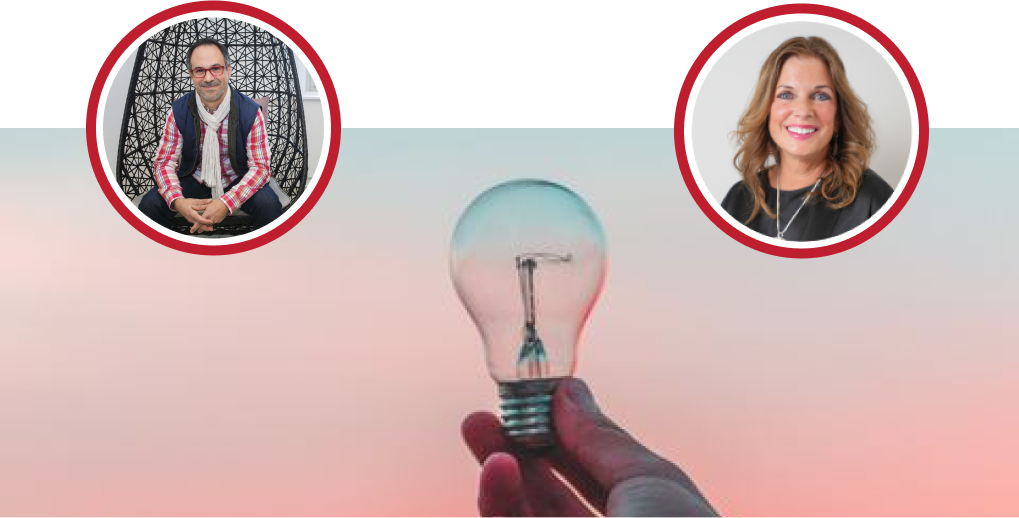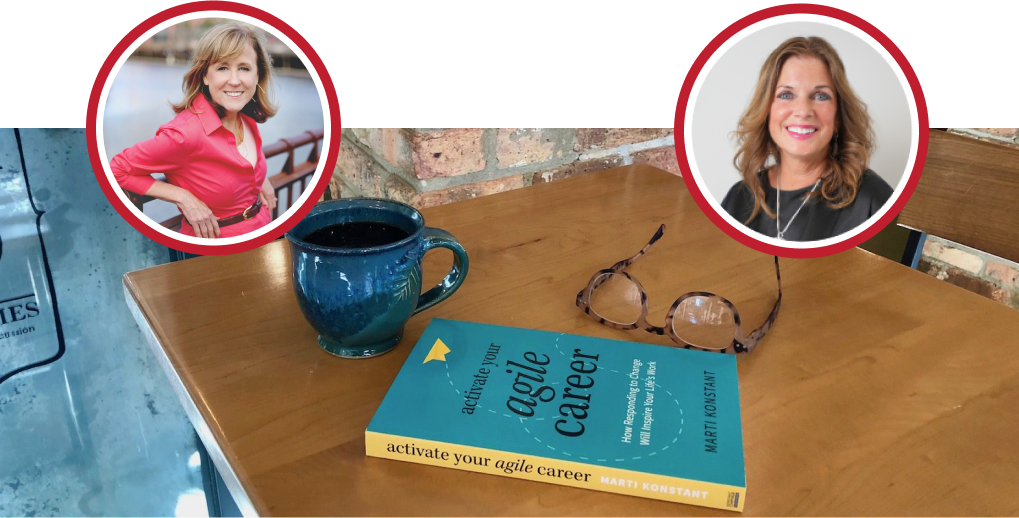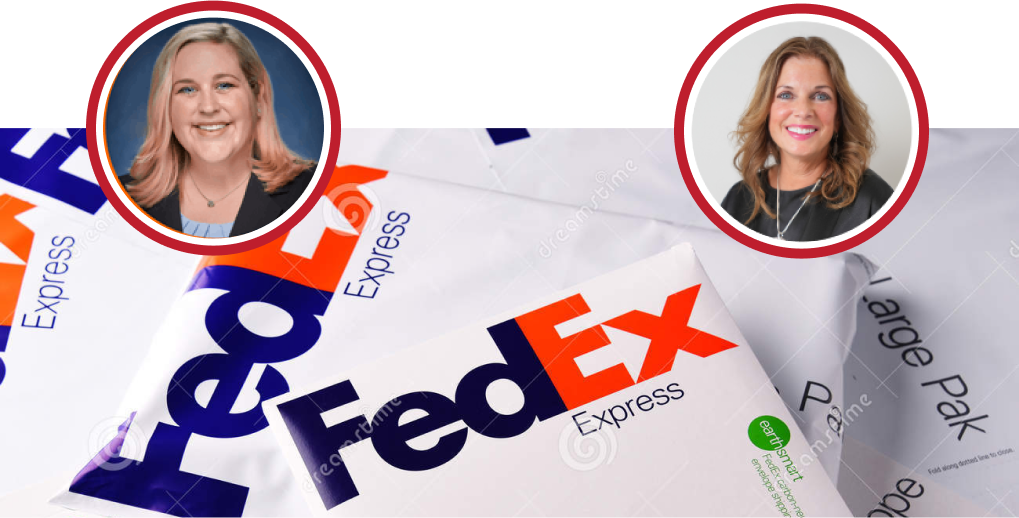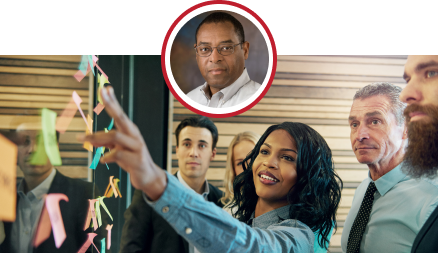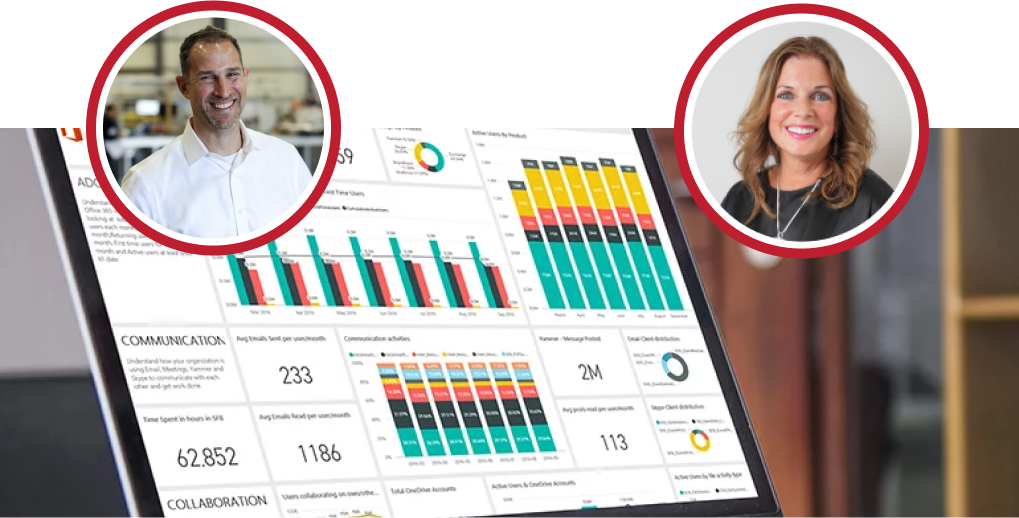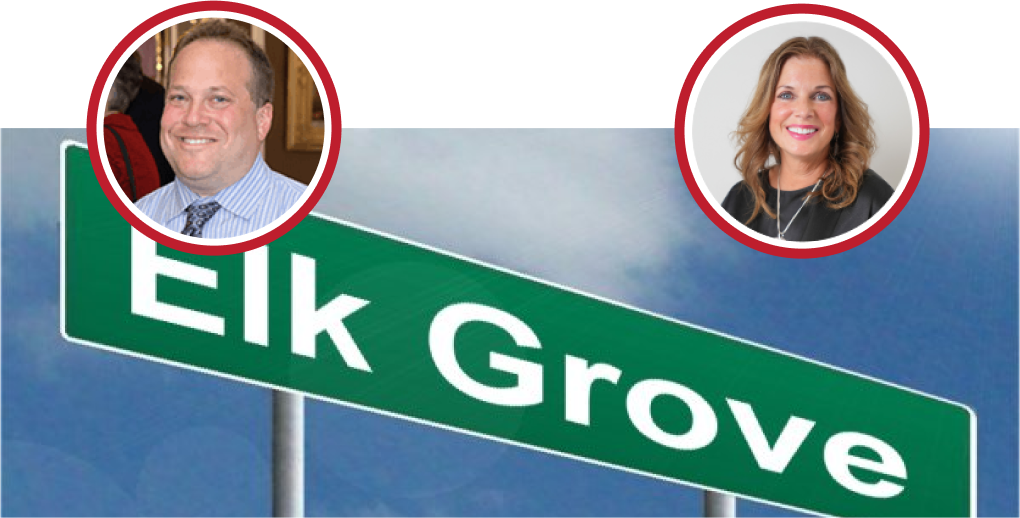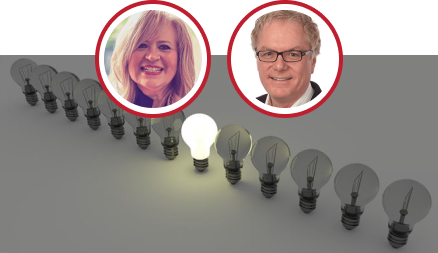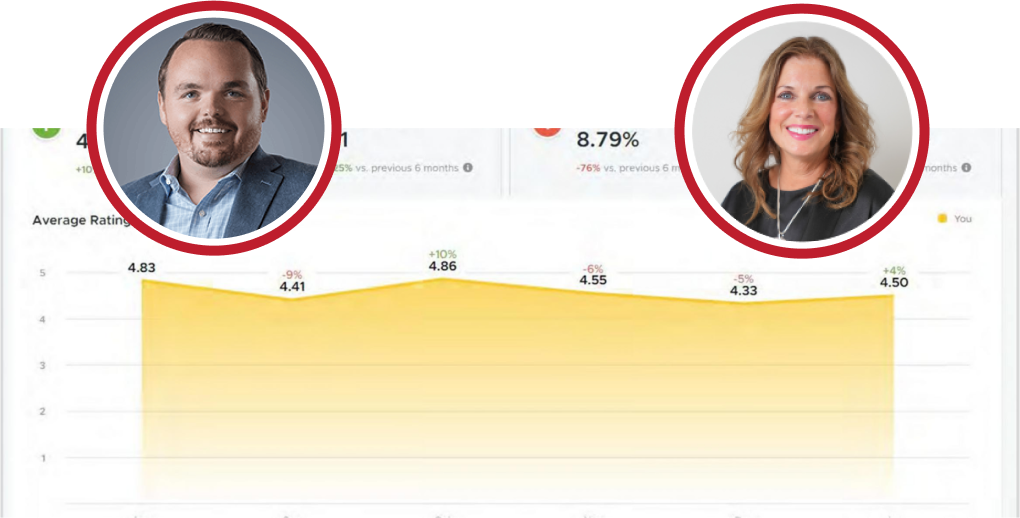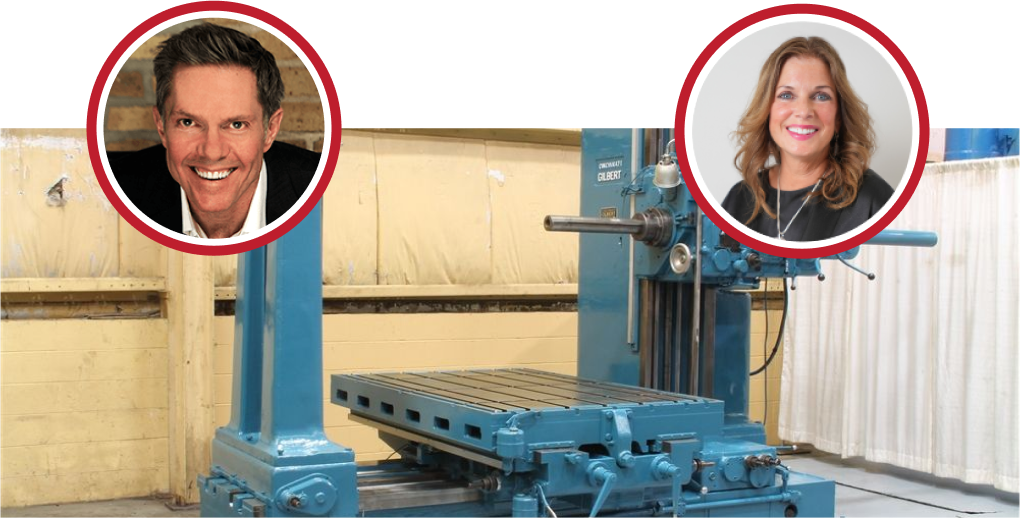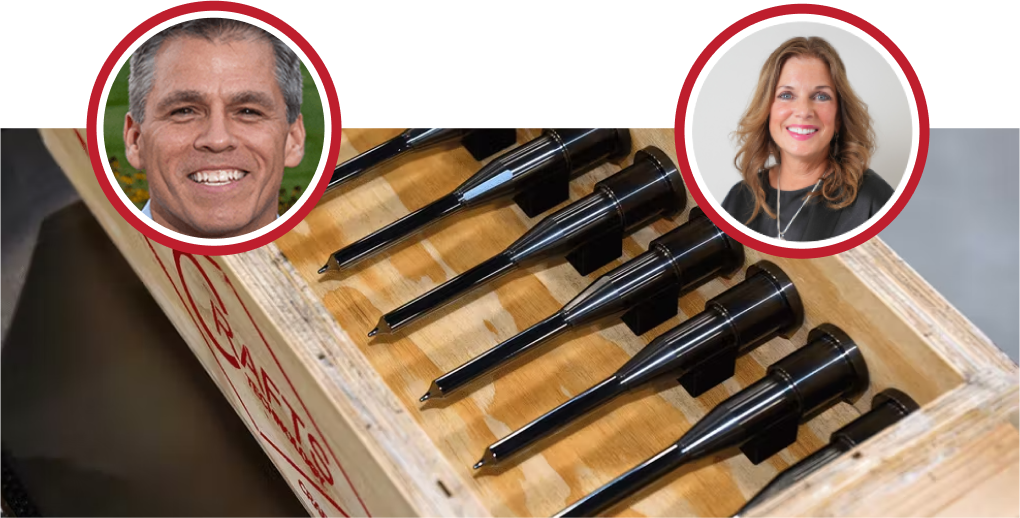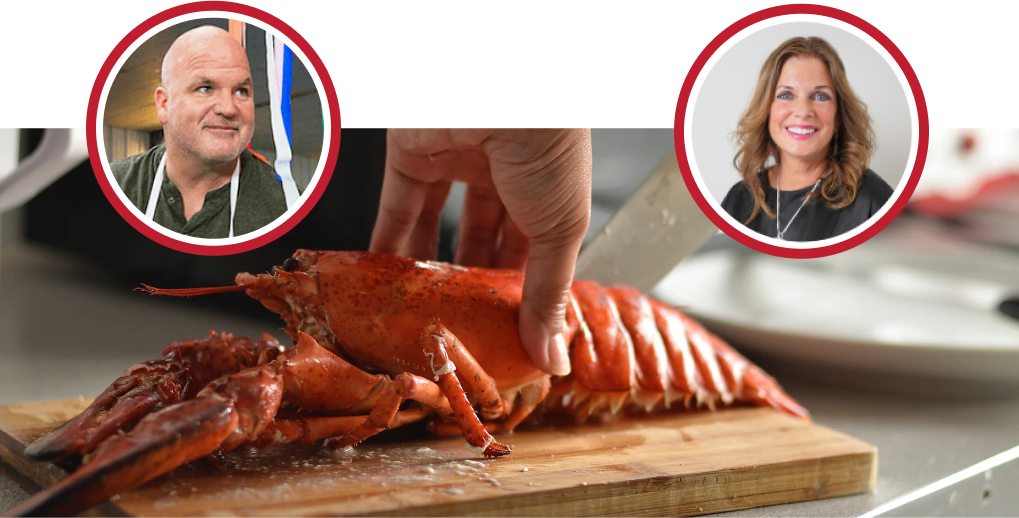Lisa: We started with our webinar. So again, welcome everyone to our “Business As Unusual” webinar series, where we’re speaking with industry leaders who are helping us survive and thrive in today’s business climate. My name is Lisa Behning, I’m an account director at Red Caffeine, and I’ll be your moderator for today’s session. We are so excited to have Kathy Steele, CEO of Red Caffeine joined by Jonathan Schroeder, who’s the President at 3DP, a leading manufacturer in industrial strength large format 3D printers Jonathan, and Kathy are going to be diving into John and Jonathan’s plethora of experience today really walking through how to leverage those strategic partnerships that you have or the ones that you’re looking to develop to really help you get into new markets work better with your existing customers or acquire new customers or expand your product or service offerings so a lot of information today, and again we’re going to be drawing on Johnson’s personal experiences not only at 3DP but also past companies that he’s been a part of as a few housekeeping pieces we do have everyone on mute today, so I encourage you to use the chat function or the Q.A. option for those of you who are in zoom for those joining us via Facebook or LinkedIn we’re also monitoring there too so feel free to add comments, and we’ll make sure that Kathy and Jonathan have a chance to answer those throughout today’s session lastly congratulations to our five winners who received each a 20 Grubhub gift card as we continue to support our restaurant industry through the continuing effects of the pandemic it’s our way to help out other small businesses so congrats to sue Christine, Gabrielle, Susan and Lori you should all have an email in your inbox yesterday with that gift card for today so with that let’s go ahead and get started, so I’d like to welcome Kathy Steele, CEO of Red Caffeine and Jonathan Schroeder, President at Thank 3DP.
Kathy: Thanks so much, Lisa, so Jonathan; we are thrilled to have you with us today. I think Lisa gave a little bit about your background, but you’ve got a really eclectic career journey, so would you just kind of start there and tell us a little bit more about yourself and your career journey.
Jonathan: Sure. So, I started working in a factory actually when I was a teenager, I did the running machine, and I did the first year of a toolmaker apprenticeship. From there, I went to college and got my degree in Mechanical Engineering. I began a rotational management program at a company. I worked in basically every functional area of a business, so from the start in engineering, design engineering went to manufacturing engineering. I was a Second Chief Production Supervisor. I managed or worked in purchasing production control cost accounting, I.T. H.R. Sales marketing, business development engineering management, operations management, basically everything. I went to Kellogg’s and graduated through their executive MBA program because of my background and having started working very early. I was one of the youngest people ever admitted to the executive MBA program with plenty of credentials to back that up. I’ve also worked for a Fortune 500 company as a Global Product Manager overseeing sales marketing and, in some cases, production and facilities in North America, APAC, and the mayo, so wide very diverse experience, a lot of it’s in industrial automation and other similar types of manufacturing, industries.
Kathy: Fantastic, it’s, it seems like you’d have to be a hundred years old to have all those different work experiences, and then you also protect and serve, so you are a police officer as well; I am so right out of the college. I had the opportunity to go on a ride-along with our local police department. It was supposed to be like a two-hour event, and I was there for four hours, and then two weeks later they’re doing again, and two weeks after that I did it again and the chief of our that department so one of our local departments kind of, a small department he asked me if I wanted to consider becoming a full-time officer and couldn’t afford the pay cut to do that, but I enjoyed it, so I became a part-time officer, and I’ve been at that for this December will be 17 years wow that’s so cool I just was blown away by all the experiences, and then your part-time job as well, so it is a really interesting clear path. So, I think I wanted to kind of circle back to the growth lane concept overall; we are always asking and asking ourselves and pushing our clients and thinking about what are the most opportunistic things that they can do in their business to scale to grow their organization’s strategic partnerships is a really interesting one I personally have seen them be very successful, but then I’ve also seen a lot of ideations around strategic partnerships, and they just don’t really take shape. So, typically we’re thinking about them in terms of expanding our offering, as Lisa mentioned, or access to talent or new industry verticals where we might not have the expertise, and then some things that from like competitive advantages by partnering with other organizations but love to hear your perspective on, why like do strategic market strategic partnerships matter in a go-to-market strategy?
Jonathan: I had a kind of long-drawn-out explanation here what my answer was, but then I just kind of thought, I think the whole idea between strategic partnership is that when you add one plus one, you get something more than two to put it very simply that’s the goal of the strategic partnership to find two companies that can work together, and they can accomplish more together than they would on their own and more it’s not just more together it’s not like one plus one would be something less than two they’d be better off than going about it themselves. So, there are some pretty famous partnerships out there. I think the one that we use reference here the most is the intel inside campaign or strategic partnership between Intel, Dell, HP, and Lenovo, all the different computer manufacturers. I think everybody in this call can relate to that because we probably all are on a computer, if not on a smart device now at some point, so I think the idea there is for intel it gets them advertising and for hp and dell and gateway all the computer companies that use that it provided some kind of, quality assurance to the end customer that they’re getting a good processor or the brand of the computer, and it provides credibility to that computer manufacturer.
Kathy: Yeah, and I mean, even in dell’s case, I think they also changed up their entire sales strategy around partnerships when they went from that direct sale strategy into some of the store locations, so I think to your point, that’s probably one of the more famous ones that I think come to mind so, but let’s start to kind of think about or have you tell the story around some of your experience around developing partnerships and this one I really enjoyed hearing about so let’s start with the more like the David and Goliath story, where there was a larger player in the space and your strategy around being able to compete against that larger supplier?
Jonathan: Sure, so a little bit of background explanation here to make sure everybody knows what we’re talking about. If you look at the company I worked for at the time, we made bearings linear motion systems single access robots, and basically, the things that enable back and forth motion if that doesn’t resonate with people. Imagine you’re at the airport, and you walk by the best buy or a cosmetics kiosk, and you go and select what you want; you’ve got a little robot that goes up and collects the item and goes and drops it off for you right that is essentially a two-axis robot you’ve got up and down motion and back and forth motion that’s kind of a more complicated thing or if something that’s one axis plus rotation would be I think we’re all familiar with a DVD dispensing machine that’s either at the end of your local Walmart or outside your local drugstore right. So, that also has a single access robot in it, and we sell those kinds of products, and we can sell either the whole robot access or we can sell the just components, and then the customers can’t design everything. So, one of the things that we were struggling with as a company is our specialty was just one portion of that we made the linear motion, but in order to make an entire robot, the customers need to select a motor a drive system controller a motor mount a coupling a gearbox cable carrier and a bunch of other stuff the first time I went through and designed a relatively simple access system for myself shortly after college. I spent over 40 hours doing it, and that’s 40 hours finding vendors doing the math doing the engineering to put this thing together, so I was basically struggling with the same thing that my customers were struggling with, and that kind of opened up the idea to me that this is a problem that needs to be solved if that kind of doesn’t resonate another way to look at it is imagined, you want to buy a chain right, and you have the option of going and buying a chain from one vendor in one place, or you can buy the individual links from different stores and then put it together yourself that’s what we were up against we have in our industry a couple of very large companies that have been around for a very long time that basically will sell the entire chain or the entire single access robot making it a one-stop-shop for our customer base now my company’s been around since the early 80s. So, we’re not exactly young, but one of our competitors has been around since World War 2, and so they’ve been around long enough that they’ve, through organic design organic growth they’ve been able to design each of the pieces of that entire system one of our other main competitors is like it’s a public company a conglomerate holding company, and they just go and have bought smaller companies that have put everything together, so they can provide. So, what you end up with is us being the little guy trying to fight these big giants and while our products in many ways are better or serve better nip serve certain niches much better we have a difficult time competing in some cases against the fair companies simultaneously there’s a shift in our customer base and our industry a long time ago there used to be engineers that had specialties and would be understanding of what they’re doing here and had a few projects on the plate today the engineers have less specialty experience we have to be more diverse in the products we tackle, and the engineers have many more projects that are on their plate, so they have less time to do that, so the idea of one-stop shopping becomes much more enticing to our customer base which is not too too different from the customer base that many other people in this college, and we all live in our personal lives right we all love or love to hate baby Walmart and target than Amazon right, but the convenience is there. I’m a busy guy with four little kids, and my wife and I like going to Walmart and target because we can get almost everything we need in one stop in one shop, one spot, and it’s at a fair price, so we had a decision to make how do we go about trying to compete with these bigger companies we looked at some of the more traditional options we looked at the merger and acquisition route murder didn’t really work for us because we didn’t want to give up ownership acquisition didn’t really work. We had enough cash we were in a good enough position that we could have maybe acquired one maybe two companies, but we needed more than that to put the whole chain together we also considered private labeling but in our particular case it wasn’t just one or two SKUs there were literally millions of different possibilities with these actuator systems and robots in terms of length and options and all that kind of stuff, so it wasn’t economically feasible we could have tried to guess as best we could like an 80:20 rule or 910 rule but the most popular parts in stock but even still the initial buy would have been so large that I would have been left with no money for marketing and no money for the sales team for spiff so neither of those were really feasible options as we were trying to figure out what we’re going to do happened to be, and I believe it was a trade show and I talked with the director of sales of a company that was in a similar space spot to us, they made one of the other links in the chain one of their key components, and we had a mutual enemy if you will of our competitor, and so we were talking about how we how we go about this and how what they were doing to combat that, and they’re trying to do the same things we were so from there I kind of came up with this crazy idea of why don’t we come up with a kind of, partnership amongst many of us companies that are in the same spot and it kind of took off from there I had to make lots of phone calls sent lots of emails talked to several people at trade shows trying to get contacts trying to find somebody at these different companies to get them to buy in and once I finally had enough people that were interested then I had to do kind of the puzzle and put everything together because some of these companies had a wider portfolio they didn’t sell maybe just one link in the chain they sold multiples, so we had to find companies that would allow us to complete the puzzle if you will but not have pieces that overlapped because we didn’t want two people that were competing with each other and I also wanted to make sure that everybody that was involved was one of the most recognized or one of the top names in their category except the end of the day we want to be recognized as best in class, and we didn’t want a self-performing company in the mix with us because that would downgrade everybody else’s credibility. So, we wanted that synergy of putting a bunch of best-in-class companies together, and hopefully, we get more out of it than each bus on our own. So, that’s what we eventually did; a lot of work went into creating subsets of each of the company’s catalogs, so we kind of picked a couple of base applications and tried to make it kind of like a one-stop-shop for our customers we came up with a branding agreement across all of the companies that in this case we were all allowed to use each other’s brands and logos for marketing purposes which turned out to be really beneficial because every time I ran an ad for a couple of grand or whatever it costs for an ad all these other companies were getting benefit out of it too, and then they did it. So, they ran similar campaigns, so we took what we would have gotten out of things like five or ten grand at the time for a marketing campaign, and we got like thirty-forty thousand dollars’ worth of advertising out of it which was very beneficial to everybody involved on the sales side we did a few different things to try and grow those sales so we [Music] we set up the all the companies so that we could do one of a couple of different ways depending on existing contracts, and it became very difficult because some companies sell direct some went through distribution exclusively some worked with reps, and so we had to depend on the company set it up so that in some cases the other companies were distributors where the sales physically flowed through them and in some cases they were like a commissioned rep, and they would get a finder’s fee. So, working out the accounting became a little bit , a little bit complicated , but we worked through that, and we found something that was beneficial to everybody out of all of these different companies that we had I think there were six or seven involved we had three of us that were kind of like the prime partners we made the sort of more critical or larger dollar amount items within the assembly and for those of us in that smaller group we set it up so that we were all sharing that financial benefit with each other the other companies where, less involved their sales team wasn’t as interested in going out trying to sell the whole solution, so we set it up where we would just buy from them at a good price and then include their parts inside of the overall upper assembly , it was a good experience it was younger in my career earlier in my career when we did this it was a good learning experience we had moderate success with the program started off really good and then over time it did fizzle out unfortunately a little bit, but it’s something that recently I’ve talked with a couple of companies, and they’re interested in starting back up learning some of the lessons that we learned from the original program so one of the best examples though is we had where I think it was in Wisconsin the sales the outside sales team for from my company and from one of the other partner companies we were working with these two sales guys working for different companies would call each other once a week, and they would go over their target account list they would talk about who they went and visited, and what they found is there were certain companies that we were trying to target, and they were already in it and then vice versa there were certain companies that they were trying to target they couldn’t get in past the door they could get past the receptionist, and they wanted to try to get in to go talk to the engineers and the buyers, and we were able to help each other get past the initial guardians at the front door and help get the other sales guy into target accounts so in addition to the sales of the actuators these guys sales guys are able to go into target accounts and sell other products too, and I think that’s a good example of where one plus one equals three or four not just one plus one equals two because we certainly got more out of it than than just doing everything on our own.
Kathy: Yeah, no, that’s an incredible story. I love the multiple wins that had an impact on sales marketing. It had no impact on the customer experience. I think even the modern-day experience and what we’re going through right now from a supply train standpoint to have that one missing piece in a whole product life cycle is so challenging for many organizations today, so to have that integrated delivery system where you could own the full product it’s just so advantageous. So, is there you did talk a little bit about some of the challenges but is there anything that you would do differently or that like were specific lessons that you would take and really internalize in the next effort?
Jonathan: Yeah, so there are probably two things that I would do differently, and I tried to think about this ahead of time to sort of simplify, so it wasn’t just about me, but it would be beneficial to everybody listening, and the two things are one when we set this up I didn’t really fully understand the go-to-market strategy of the other companies that were doing the strategic partnership with us. So, I just kind of made the assumption that everybody sells as we do, which is we sell direct, we sell through distribution, we have a mix of direct and indirect sales reps out in the field and what I failed to realize is that one of the other partners that we worked with they sell primarily or mostly only through distribution and when you sell through distribution and catalog houses you have to have more things prepared you have to have more documentation you have to make your skew list much down and much simplified and try and boil it down to just a few options whereas with, the other two ourselves and the other company we’re more about an engineered sale. So, we want to go in and find out what the customer’s problem is and then solve it with whatever custom solution they need or one of the thousands of products we have, so that was a little bit of a miss now if we do this again we would end up kind of pre-designing a couple of options and making those as kind of the primary go-to options for the companies that sell through distribution and then kind of tease it off with an option that if these options don’t work then contact us when we can custom design something, and it’ll be approximately this many dollars. So, that was probably one of the misses; the second myth is that once I moved out of the role I was in at the time when this was set up, there was no longer a champion driving it; there was no one any longer somebody having a month call with the other companies involved asking how things are going and then as we the companies have natural turnover over the next like three to five years the new sales guy that rolls in doesn’t know about this program doesn’t understand all the benefit to it and so it kind of just fizzled out that way we also didn’t have a product champion that as my company and the other companies developed and launched new products that were now the focus of the sales team those weren’t integrated into the program. So, we didn’t, we become stagnant, we didn’t adapt with the times, and we didn’t have that champion there to continue to champion it as things within the different businesses changed, and this personnel changed.
Kathy: Yeah, well, thank you so much. It’s always, I think, important for everyone to hear both sides of the upside and then the potential challenges that you might encounter and curious about was there any, I always think about like who owns the conversation if there’s any kind of delivery issue or and like if there’s a problem how did, who owned that relationship with the customer and would deal with anything that might have gone wrong?
Jonathan: Yeah, so the sales, in this case, went through one of the three primary companies; they’re the ones who took the full order from the customer, and so any one of us three of us could have had that conversation, but ultimately, my company was the kind of the integrator we did the bulk of we made the largest mechanical part, and then we had the facilities in North America to put everything together, so we did that assembly we were most suited for that, so if there was a challenge that needed to happen or a discussion that needed to happen then we would go ahead and have that conversation with the customer, and it would usually be a conference call between us and whoever originally sold it and the end customer.
Kathy: Got it, and I think we just got a question from LinkedIn from one of our LinkedIn attendees, so the question is that is what I refer to as align and prepare territories of alliances development, so structuring your partnership agreements how are you managing the relationships? Are you doing it together or one-to-one, and currently, you’re curious how you’re leveraging that system?
Jonathan: So, this was when we started this program. It was about a decade ago, and we didn’t have a really good CRM system in place. We didn’t have a good way of sharing that information amongst each other; it’s basically, whatever was on the purchase order was the information that was shared back amongst the different companies. If we were to do that today, our I.T. systems would be much more sophisticated than they were a decade ago, so we could set up some method of sharing leads back and forth between the two bet different companies and the partnership, which would also increase the value to everybody.
Kathy: Yeah, no, absolutely, adding technology as an accelerant is, I think, a missing piece of the overall systematization of the process, but it sounds like even though it was ten years ago when you founded, it was just it there were so many good things in terms of the outside that it and I think it’s really relatable today where we’re all struggling with what peace might not be available to us in our entire delivery model even for us as a more service-related business if we’re missing a purse a person it’s tough to deliver on the whole plan so all right let’s talk like switch gears and talk about something that wasn’t necessarily intended to generate a lot of revenue, but it was a partnership that was also really advantageous as you sort of jointly developed a cooperative research partnership.
Jonathan: Sure, so let’s see up with that one different company than the last one I talked about. The 3D platform makes large-format 3D printers that are designed for industrial customers’ industrial applications, and in our industry, there is a department of an energy-funded manufacturing demonstration facility in the Knoxville, Tennessee area called Oak Ridge National Labs. Now Oak Ridge National Labs is one of a couple of large National Labs that we have in the United States, but this one, in particular, had a small subset of the lab that focuses on manufacturing for the future and making sure that the United States is a competitive manufacturing force globally into the future. So, one of the things that they work on is additive manufacturing which is an up-and-coming area that is in the news now a lot and a lot of people are talking about, so the type of product that we manufacture is large format and large is a very relative term, especially in this industry because there’s actually seven different types of 3D printers and the type that we make large to us is let’s say a meter by a meter or three feet by three feet bed size then slightly larger but if you’re a company that makes sterile lithography or something that’s formed with a laser large could be the size of a golf ball. So, it’s very different to scale the types of printing that Oak Ridge was doing was primarily focused on objects that were sized by car or slightly larger than that so that and that was their definition of large, and then they make house size printers now or help people, so we came to them and said that hey we’re looking to do development in a few areas with some kind of groundbreaking ideas that we had, and they said this is great the type of product you make is between the existing kind of desktop size printers that a lot of companies have and the large form printer we have that can print a car is a million dollars, and it’s too expensive for a number of the customers that, that we have so we kind of started a cooperative research and development agreement with them or create a and we came up with an an area of focus we came up with a small phase one to see if it was like a feasible feasibility phase that ended up working out very well, and we currently are now in a phase two of that program moving on to more more beneficial things so from our standpoint that cooperative research and development agreement is a 50:50 input, so we have a grant essentially it’s a grant from the department of energy that pays for half of the investment which is basically some materials and mostly people’s time at Oberg National Labs, and then we kick in with 50 percent of either equipment or dollars or our staff’s time for the project. We don’t expect a lot of financial return out of that there are before covet hit there were a lot of people that went through the MDF at Oak Ridge, so there’s quite a bit of visibility in advertising that you get, and it’s all cutting-edge technology best-in-class companies that are there, so there’s quite a bit of brand recognition that we get for being there but one of the things that I didn’t really expect out of this was one day I got a phone call from one of the champions there it’s kind of like a rock star if you will in our industry and so that they were working with the navy in the marine corps on a battlefield deployable printer and the printer they had selected was not surviving the trials that wasn’t working he thought that our equipment would work well for them and all of a sudden he’s like how fast can you get me a printer, and we got them on I think the following week they made some modifications to it and sent it off to the marines at camp Lejeune for a field trial I was lucky enough to go and spend a week there and help our marines and get them to deploy it we actually had to move the printer twice. So, it’s like being deployed twice on our printer, and that week-long trial survived whereas the previous one didn’t, which is essentially one of our competitors s we won this project because of that commitment and that partnership that we have with Oak Ridge.
Kathy: Yeah, and so I mean, I love this concept. We’ve seen some of our clients try and launch these types of initiatives is what really led to the thinking around, like how did you even go about thinking about this, and what were some of the steps and getting creating a relationship with Oak Ridge.
Jonathan: It came down to they were well known just well-known entity within our industry; we had seen some of the things that they were doing in press releases and in magazine advertisements and advertisements from some of the other companies within our industry they happened to attend some of the same trade shows that we attended and had a booth kind of showing off the things that they were also doing advertising saying that hey we’re looking for other companies wanting to do cutting edge things, and come talk to us. So, I talked to them at a trade show, I think it was actually in like 2016, for the first time and kind of pitched the idea, and they initially said nope, not interested, it’s not a good fit, we don’t think your idea is really going to work long term and then I just kind of stayed on them talked to him at each of the following trade shows, and then it was a year or two later they said let’s talk, let’s do this Crada. So, I was a little bit ahead of the curve for what they were ready for, and once we proposed it and agreed to it turned out our idea was mathematically like premium practical, the best option for practical implementation. There are a few more challenges than both of us expected, so we’re working through those technical challenges, which are what they’re there for, and hopefully, at the end of this, we’ll end up with a product that we can commercialize.
Kathy: Yeah, well, I think it’s just a fantastic idea, and I’m always a huge fan of using influence in how we ideate things, or even in our marketing efforts and being able to team up with a known industry rock star is usually somewhat advantageous in a lot of different ways, so I’m going to switch gears again, and this isn’t exactly a partnership discussion, but I thought it was very interesting because even though I think we’re all invested especially in manufacturing and protecting our local supply chain global expansion is on the radar or part of a strategy for almost any organization today can you talk about you were charged in one of your roles with an expansion in Germany and can you talk a little bit about what that kind of charge was and some of the key components, and, as well like, what would you do differently, if you had the opportunity to redo it.
Jonathan: Sure, so a little bit of history here. The company I was working for had been exporting products to Europe since maybe late 80s early 90s, and we got to the point where we were supporting our distributor base their best as we possibly could but the lead time for shipping from the U.S. to Europe was too much for us to be able to get more business, so we had plateaued on top of that the ability for us to sell directly to customers in Europe a lot of them didn’t want to deal with importing from the US the long shipping times they want a local supplier, so we reached the base where we decided that we had to have an a physical facility a distribution warehouse or manufacturing facility in Europe in order to be able to support our expansion and our growth plans, so we looked into it, we evaluated a number of different cities around Europe we looked in Spain and Italy France Germany and the UK, and we also looked at the Netherlands and company in the Netherlands going through a company in the Netherlands that helps American companies migrate to Europe and kind of provides them with warehousing services with office space it’s kind of that easy entry into Europe if you wanted to go that route we didn’t find that financially viable to go ahead and do that so, but we decided to kind of jump into the deep end and open up our own facility there we end up choosing to be located in Germany primary reason for Germany is for our products the largest single country our target market was Germany so that was one benefit second thing is ups primary distribution hub is in cologne and if you want to be able to ship quickly small parts which a lot of our pack our parts can be shipped small package you need to be located within two hours of ups hub and clone otherwise your your shipment times can be four or five days to locations in Europe personally I really liked Italy Milan great weather great food that would have been great, but practically Germany was the place to be so when we looked at this expansion a couple of things that we did we found a person in Germany that was going to be sorry a person in Europe who happened to be in Germany who was going to be the managing director long term, so we hired him and that was the kind of the starting point for us we brought him over to to the U.S. and we did so the initial training the corporate introduction he was from a company that was kind of similar to our industry, so we didn’t have to do a ton of training , and then he went back to Germany and did some kind of the precursor things made some meetings with the banks and the lawyers and got all that kind of stuff set up. So, then our CEO and I went over to Europe and within two days we met with the lawyers and the bankers, and we opened bank accounts and officially founded the company and said did all that kind of stuff to get us kicked off we moved into an office, and we placed our initial stocking order and had products show up a couple of weeks later for that, so there’s a lot of initial stuff that had to be done some of it we had done ahead of time making catalogs in different languages setting up the business accounts and the branding and all that kind of stuff one of my kind of key takeaways and I kind of really realized this a few years later as I was going through my executive MBA program at Kellogg and several people in my class had done something very similar to what I was doing, or they were there with their current company and preparation to go do the same thing so when you look to expand one of the things that you need to think about and if you’re going to consider doing this is I think in order to be successful with this expansion you really need four things and those four things are one you need corporate culture so if you’re trying to expand your own brand your own company you have to under have a good understanding of what that is you have to have an understanding of the product or the service that you provide to be able to effectively provide quick response time to your customers in that new region you’re going to you have to have knowledge of local laws because we don’t want to go to jail that would not be a good thing especially in another country, and then we need to have a knowledge of the local customs and traditions right in order to be successful, and I think when, when I was talking to people my cohort, and they’re from fortune 100 companies a lot of emphasis was put on corporate culture and product and service knowledge product or service knowledge, and because you’re basically as Americans we’re going to pick ourselves up go put ourselves another country, and we’re going to operate that same way as we do here, and we’re going to be successful well that didn’t work for Walmart in China right there are plenty of other companies out there where that hasn’t worked for and actually a couple of classes and case studies we read about the MBA program all had story after story of a company going to another country and failing because we marketed to that other country like we marketed to ourselves and that doesn’t work one of the stories I remember reading was from it Gillette the company that makes the big razors right we’re used to selling, and they want to expand to India and five pages of reading or ten pages of reading summarizes to this they marketed and sold to India like they’re selling to the US, India wanted to people in India wanted to buy a premium product, but they couldn’t afford it because they had packaged it in packages of three five ten like us Americans are used to getting when we go to Walmart, but the people in India couldn’t afford that much, but they still wanted to buy the product, so in order for them to be successful they had to change their packaging and sell them individually and once they did that they were able to sell individual individually. So, my takeaway from this is that two things one actually knowledge of local customs and traditions is probably more important than your corporate culture in transplanting that, and it’s more important than the product or service the product or service they provide the knowledge of that, so you could take somebody and transplant them but the other thing I took away is that if you want to be really successful that it’s not one person that’s going to do this typically there is a chance that one person could do this, but that one person is typically going to be an expat from the target market that is now like living in the U.S. or living in Germany or Europe or wherever you’re at, and you’re going to send them back to their original country well they’re an expat or a transplant for a reason they probably don’t want to go back unless you can guarantee them it’s going to be for a year two years or three years or something like that they’re probably not going to be too excited to do that , so what we found that worked really well for us was that we had two people it was me and the person who’s long term going to be the managing director, and we went in as basically equals technically me being the representative from the parent company I could pull rank if I needed to, but I tried not to do that and out of the many times we had discussions about things I only did that a couple of times, and some of the things that we discussed looking back in hindsight were so trivial but to me anyways , but it was actually quite important to to the gentleman I was talking to , and things that I just didn’t necessarily understand like me as American here at that point I had like two weeks of vacation we were making an offer to our first outside sales person and started with six weeks of vacation well nobody in my company has more than four weeks of vacation, so we were going to get an outside sales guy who just started with us starting off six weeks of vacation , but that’s normal over there right you go to Italy, and its normal people take off the month of august , and it’s just it’s a different culture it’s a different way of doing things when we made our corporate handbook for Germany we couldn’t very well give all the American holidays, Fourth of July and Independence and Labor Day and that kind of stuff because it didn’t relate turns out Germany has more public holidays than we do, so we had to account for that , so there are plenty of things that we had to do to adapt to the region that we were expanding to and that takes precedence over the parent company’s way of doing things.
Kathy: Yeah, no, I mean, there are so many things that somebody that knows a local language well, and I have a friend that infinitely changed a wine distributor in California because she could go into China and sell wine, to speak the language unravel all the different things that you had to do in terms of getting through legal loopholes, but it’s important to understand the local culture I would even say in us there are differences in terms of where you’re at in the United States and how message and really resonate in certain geographies where everybody’s speaking the same language and has more typical experiences at work, so great I just think it’s a fantastic story around growth, so I’m glad we were able to include it I know we’ve got some questions coming in, and I want to make sure we have enough time to answer that, so Lisa could you kind of tee up one of the first questions for us?
Lisa: Great, so and thank you, everyone, for your contributions to LinkedIn and Facebook; please continue to send them in so Jonathan stick with one of the questions for the topic that we’re on right now how do you convince your management of the long-term nature of creating strategic partnerships this could be overseas or stateside most the time you don’t see an ROI for at least 12 to 18 months depending on your product or service. So, what experience or advice could you offer someone there on leading the charge?
Jonathan: Yeah, so I’ll think back to my work for the public company; when I started, I was originally hired to do something very similar to this that was going to have a long-term payback; it wasn’t going to be quick, and then halfway through the time I was there my local division got a new president and they the public company split into two companies, so cash became very tight became very focused, and all of a sudden we didn’t want to do anything that was under that had more than 12 month payback period so trying to think about that I guess, I would say it is going to be very difficult in some cases to convince management to do this. So, I would suggest if it was me trying to do this in that situation I would probably try and break the problem if you will into smaller pieces and figure out how to accomplish that milestone by milestone while painting the picture of where we want to be at the end but find a way to get a ROI even if it’s very small and early on or trying to find a way to delay the spending of cash so if you’re looking at just purely mathematically if you delay that your initial spending of cash and do as much non-cash things as possible up front then you can push all that cash to later and your ROI calculation may work for you can if that doesn’t work you could try doing some things informally that maybe don’t require any extra outlay of cash try to go and if you’re looking for something similar to what we did try and just get the sales teams from the two different companies to work together or try and do branding joint marketing things together where you’re going to spend that marketing money anyways now you’re just adding somebody else’s logo on to it too it doesn’t cost you anything more so try and find some creative ways like that , and sometimes you just have to plant the seed and water it in water and water and fertilizer and fertilize it, and eventually it will grow, and eventually it will gain some traction so just stick with it.
Lisa: So, next question, I’m actually going to take one from LinkedIn from the mark, and I’m going to combine it with a little bit more because I had a similar question as well, so Jonathan, when you’d spoken about some of the past relationships you talked about when you left there was no champion there was gradual turnover at companies, and so people didn’t realize the program, so a lot of learning has happened since then. So, what are some of the things that you’ve now put in place or are trying to put in place to make sure those relationships or partnerships don’t fizzle out?
Jonathan: Yeah, it’s I think it really just comes down to is having somebody to drive it , and it could be actually could be one of two things either you put so much structure in place that you no longer need a person to drive it , but that takes a very special skill set, and it’s really a lot of work to get that up and put that all in place, and it usually takes quite a bit of time the other thing would just be to make sure that there’s somebody there to drive it one of the things we’ve done in my current company is trying to put a little bit more professional unstructured project management into place so when we run a project or a program we have kind of documented program managers project managers we have a documented executive sponsor, so really you’ve got two people in charge and if one person were to leave somebody else is there to pick up the pieces and continue to run with it, and then we have, we have monthly board meetings with our board of directors and anybody who’s running one of our key projects for the year they have to present a very simple like one-slide update on their project takes a few minutes to do it first time, but it’s really five minutes of work to do that update I mean we intentionally made it. So, it was a templated form that was very easy to fill out an update, so it didn’t become a burden, and then I think we’ve got like 40 or 50 different key projects running right now, so all of them get updated and included in the PowerPoint presentation for the board, but then we’ll pick cherry-pick five or ten that will actually get up and speak for a minute or two during the board meeting give a verbal update.
Lisa: Those are some great ideas; thank you, all right. We’ve got time for one more question before we wrap up, so the final question coming from LinkedIn were you able to leverage a relationship with a multinational customer to expand your penetration into multiple countries? Sorry as I’m going back, so I’ll reread that were you able to leverage a relationship with a multinational customer to expand your penetration to other countries or multiple countries.
Jonathan: I would say with our global expansion into Europe, we definitely were able to do that; we had companies that had expanded their business in Europe and wanted to buy from us, but they wouldn’t buy from us across the pond, so we had to have that local presence, so we were able to do that similarly we’ve had companies migrate their production from us to China one of the things we didn’t get a chance to talk about was we also have a joint venture with a company in China to make products and services there so through that J.V. we’re able to support companies in China, so we were able to in some cases grow and expand and gain new customers, and then some cases just keep customers as they move the production to a different continent.
Lisa: Jonathan, thank you so much for your time and your energy and all of the great answers and information that you’ve shared today. So, for those of you watching now live or perhaps watching our recording later, if you have a question for Jonathan, you can reach out to him on LinkedIn, or you can also email him as well; we do have his contact information up on the screen so again thank you so much, Jonathan, we really enjoyed having you the last hour has completely flown by for us.
Jonathan: Thank you guys very much for having me appreciate it.
Lisa: All right, so as we look to next month, our next “Business As Unusual” webinar is going to happen on August 19th. We’re going to be talking with Nicole Westenberger, who’s the Vice President of Global eCommerce and Marketing at Brady Corporation. So, Nicole is coming to us with a really interesting topic, and I’m very excited about it especially when you look at e-commerce and manufacturing we hear some pushback and I think Jonathan, you even touched on it today there’s so many SKUs and so many options so Nicole’s really going to dive into why e-commerce is so important for manufacturers to look at how to build the case for it and get the buy-in not only from your team but also your management group and then as you look ahead how do you change your distribution models how do you handle your team and your leadership and how do you communicate that out to your customers and change their mindset as well so stay tuned again August 19th is our next webinar you can go to the right caffeine website and register for it if you’d like to attend via zoom, and we’ll also have invitations out for LinkedIn and Facebook as well lastly as we wrap up today one final note that the Red Caffeine team would like to share with you is we will be doing our people plus people conference thankfully with the covered rates declining we’re excited to be able to bring this back to you Kathy, I don’t know if you’d like to share a few words regarding the conference and our excitement about bringing this back to the general public.
Kathy: Yes, we are missing people, so we are excited to do a live event, the 2021 people plus people conference; it’s going to be all around the different growth strategies. We are going to do a one-day event instead of two, so it’s a little less time commitment, but we really believe that in one day, you’re going to walk away with a plan that’s going to set you up for accelerating your growth in 2022. So, join us on October 21st, and our registration is open on our website. You’ll get some information in the recap email as well, but we are really excited to be held at Oak Point University, our venue partner right in Oak Brook, Illinois. So, we’ll hope. Hopefully, we’ll have a great attendance as we always have; we’ve got a really exciting speaker lineup. Rob Johnson, with former newscaster, is going to join us to talk about presenting both on-screen and off-screen, and really, I’m going to wrap up the day with some really great things to champion to your teams as you talk about growth for 2022. So, really excited about being able to host an in-person event in a few months.
Lisa: Thanks, Kathy. So, as we wrap up today, thank you again for attending our “Business As Unusual” webinar. If this was the first one that you’ve attended, we hope you enjoy the content; you can visit our website, www.redcaffeine.com, to see all of our past webinars. They’re all up for review, or if you’d like to connect with Rick hacking to learn a little bit more about how our growth consultancy model can help grow your business, reach out to us at connect@redcaffeine.com.
